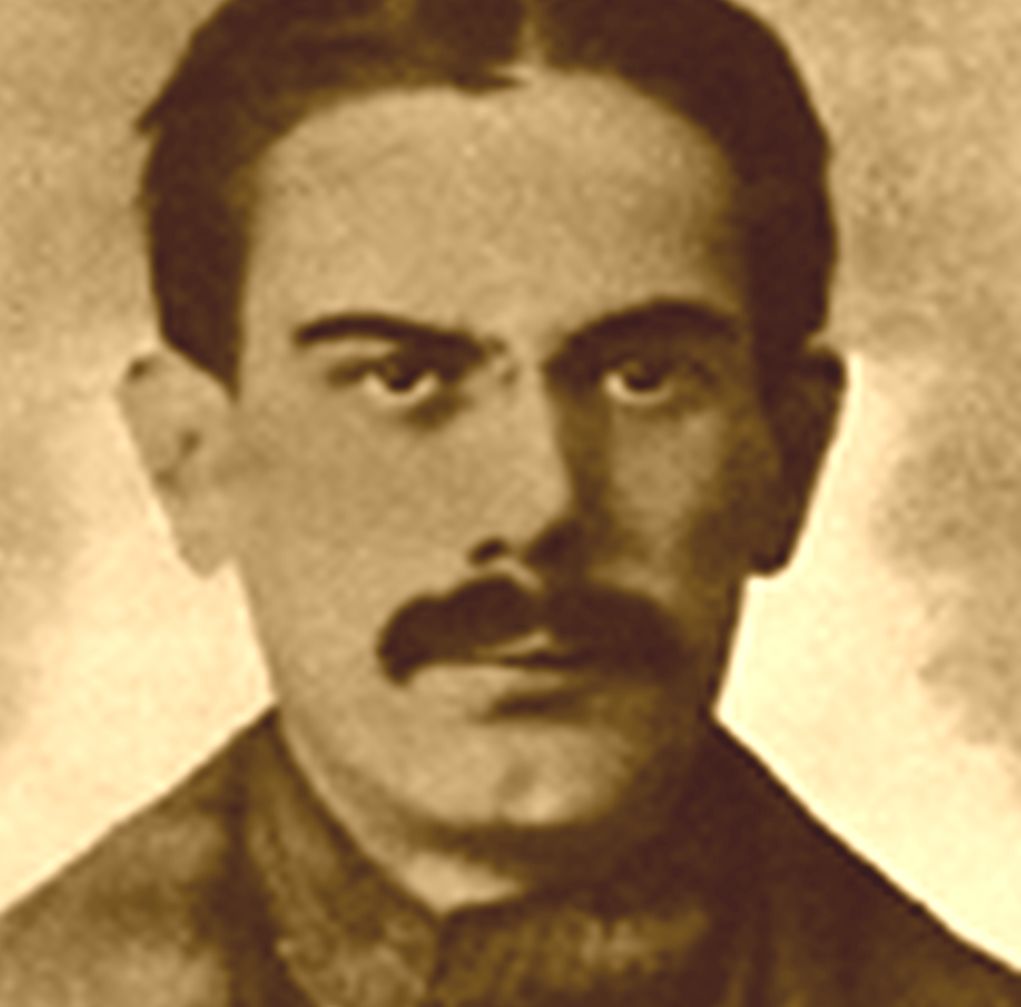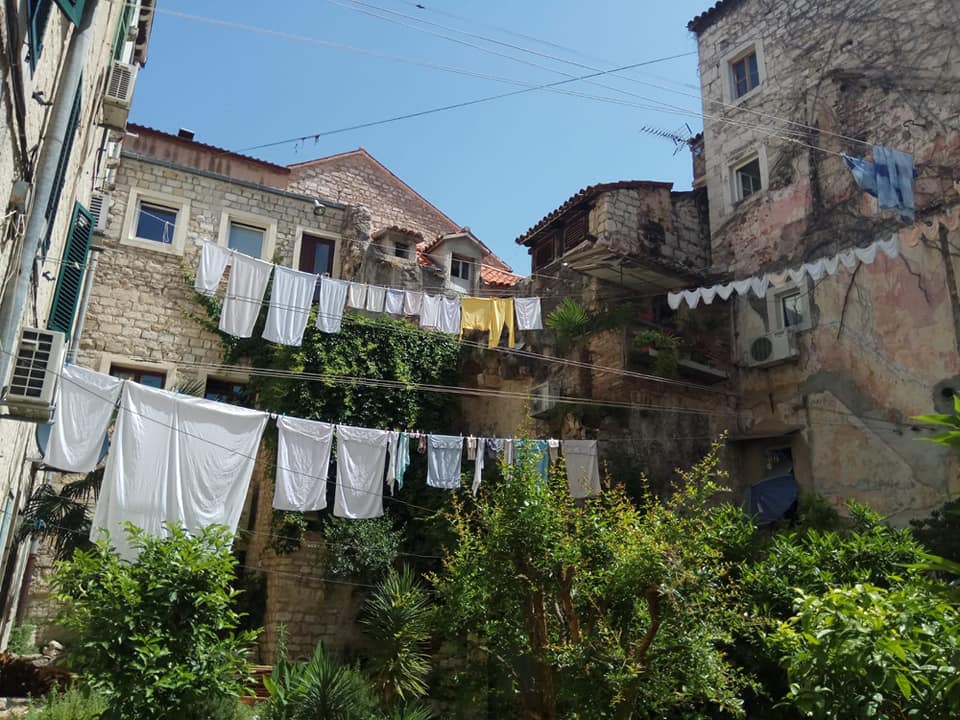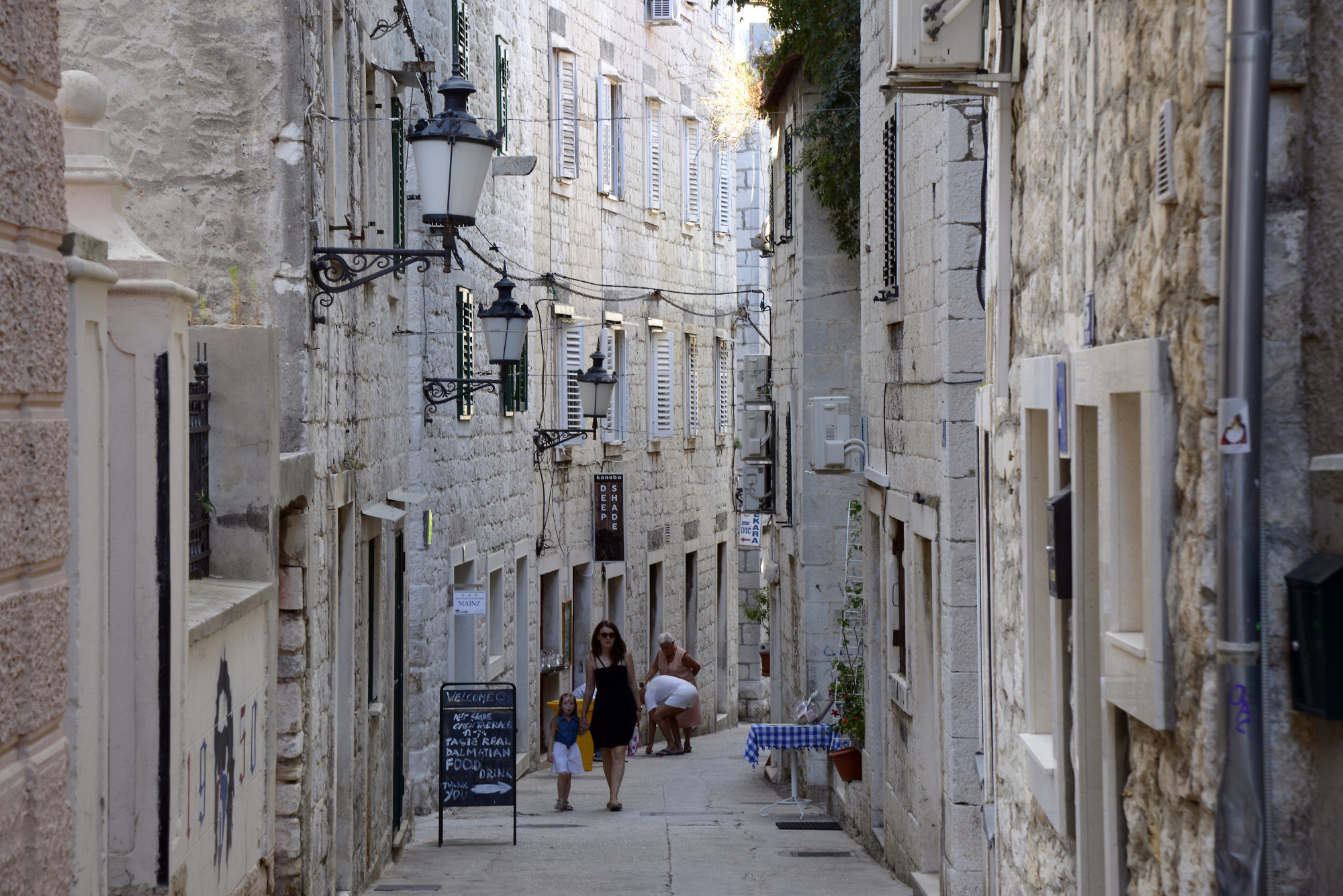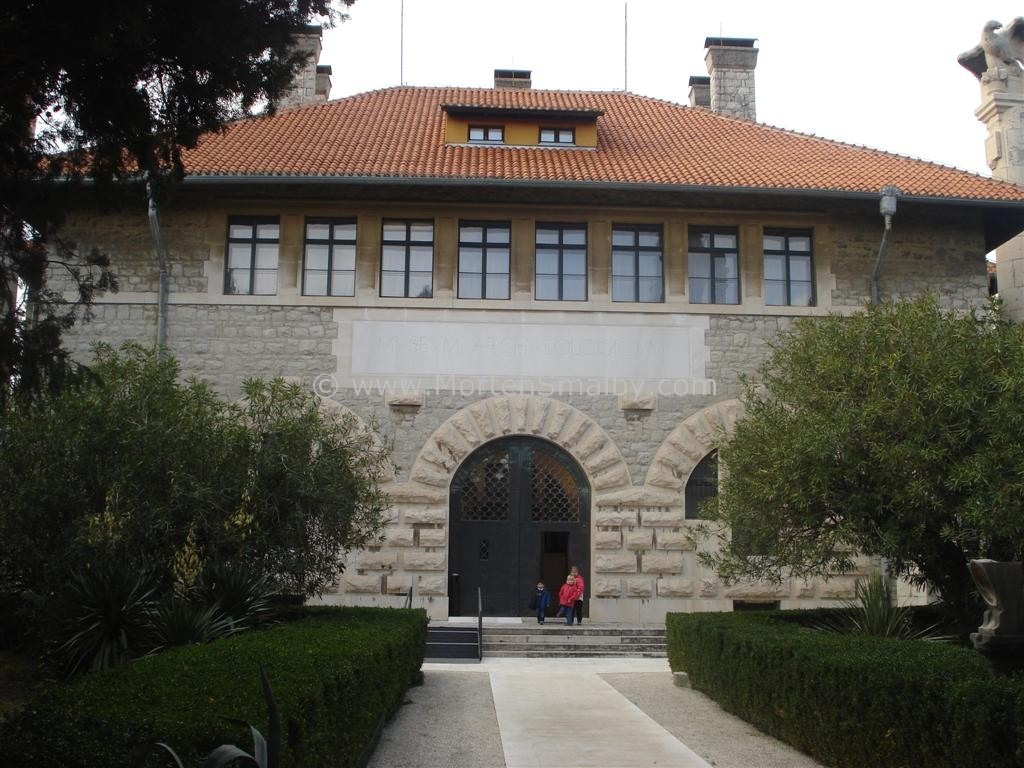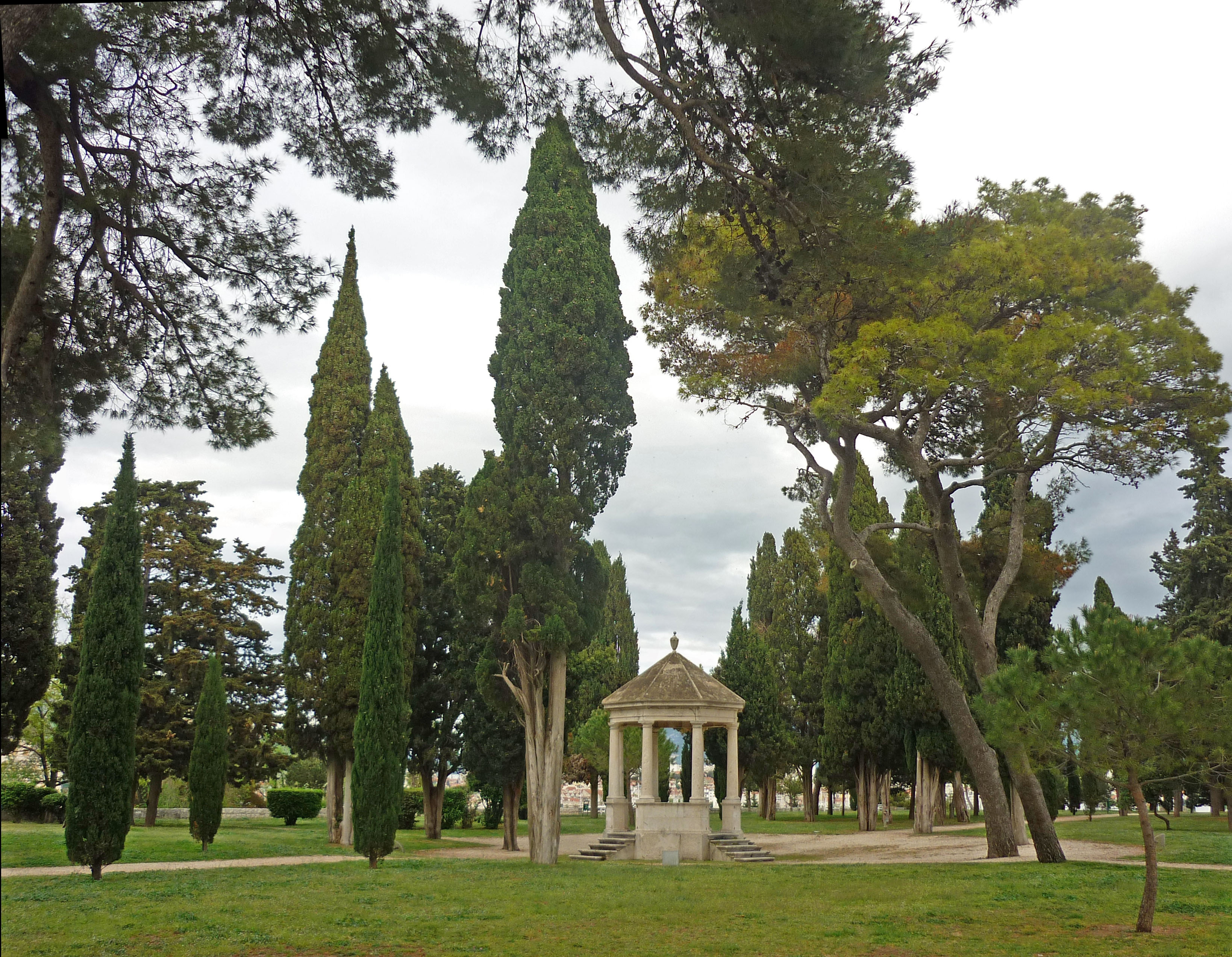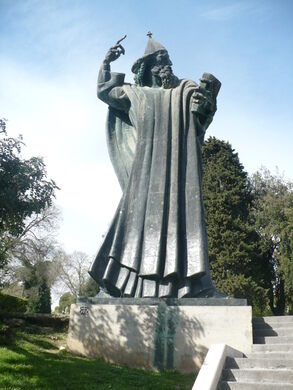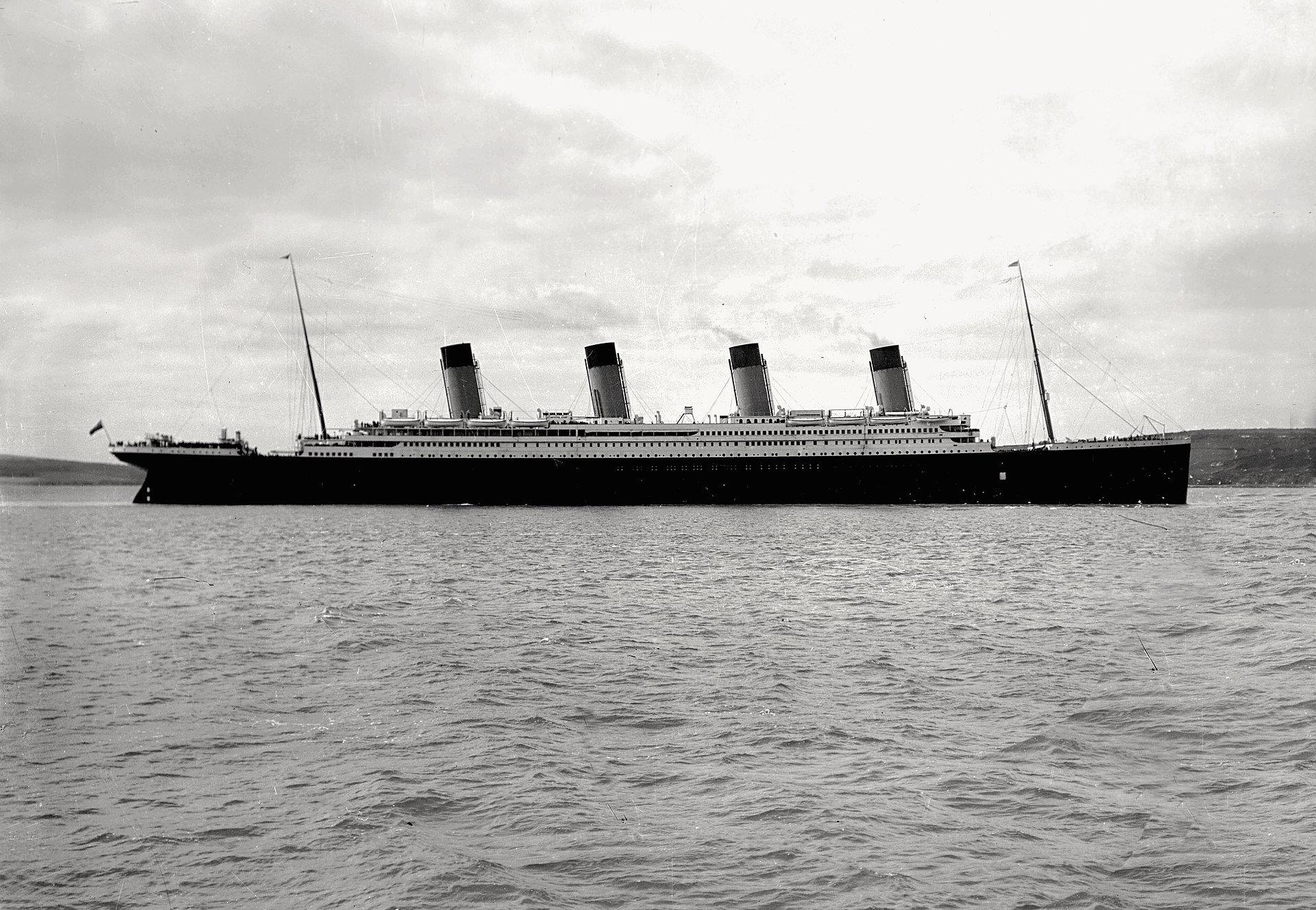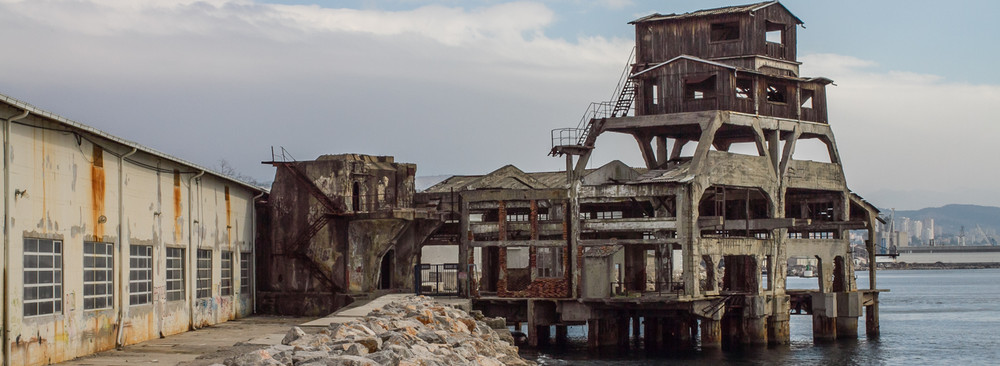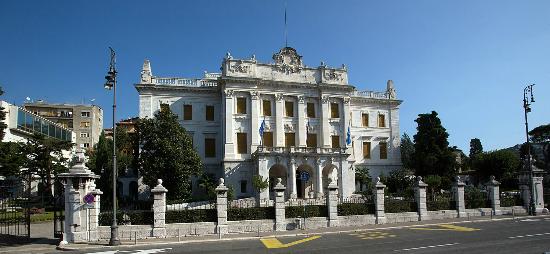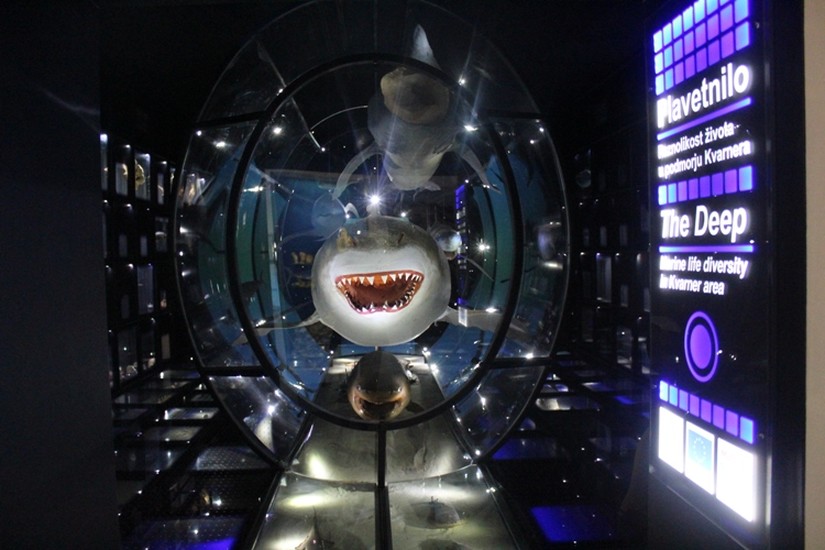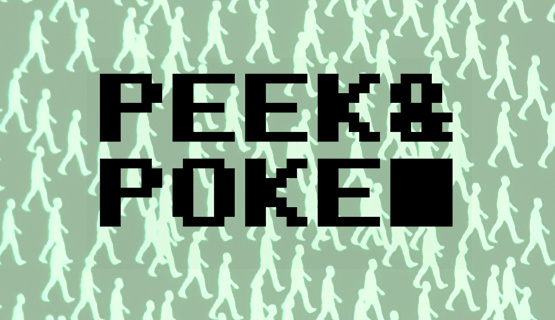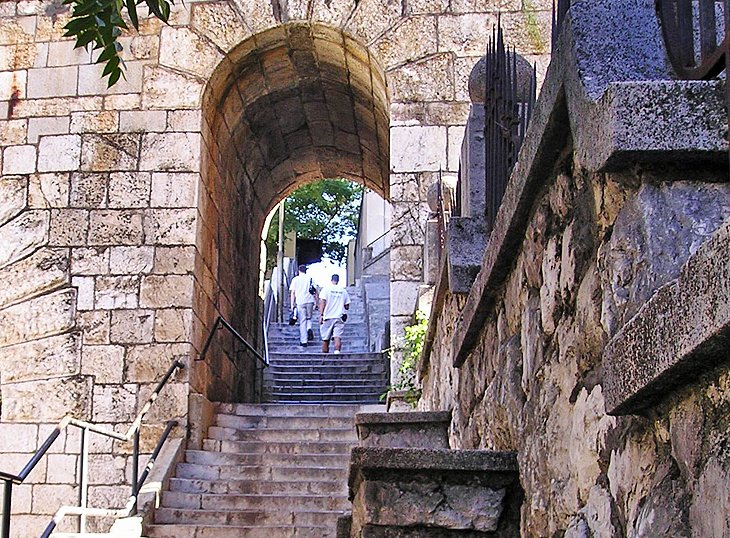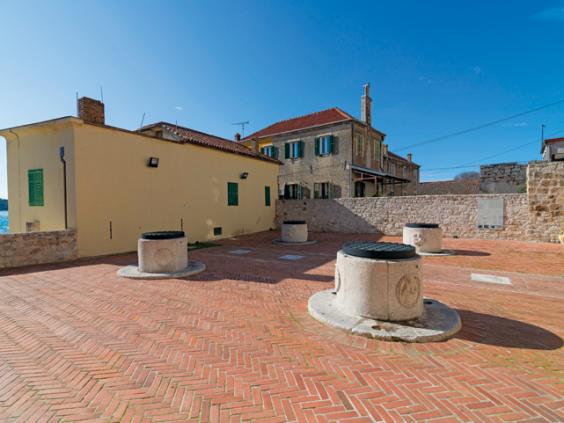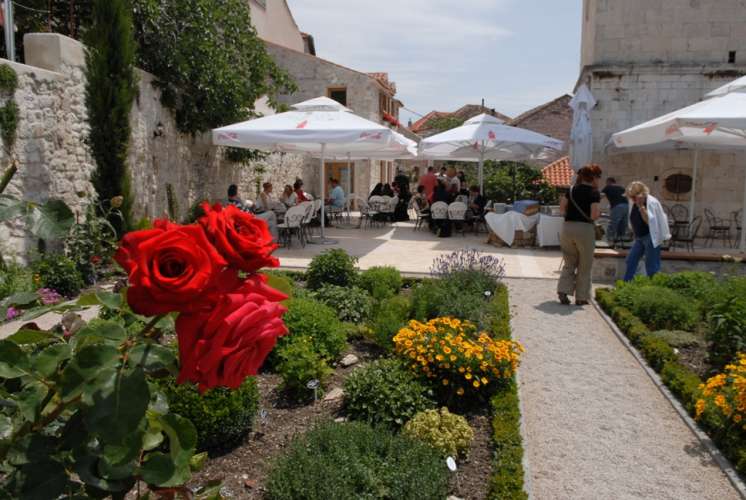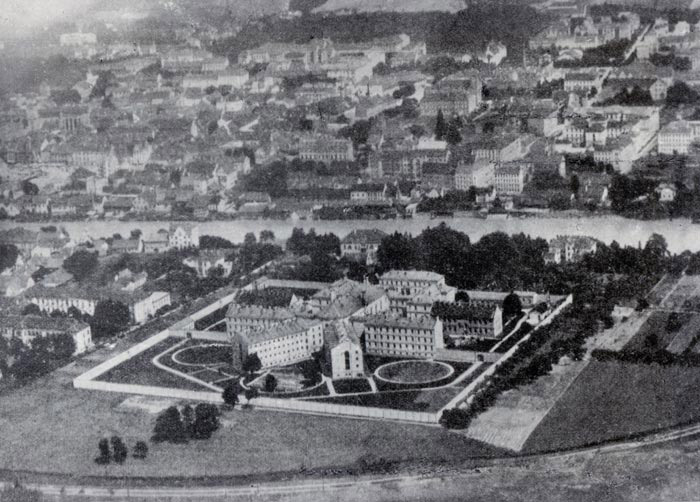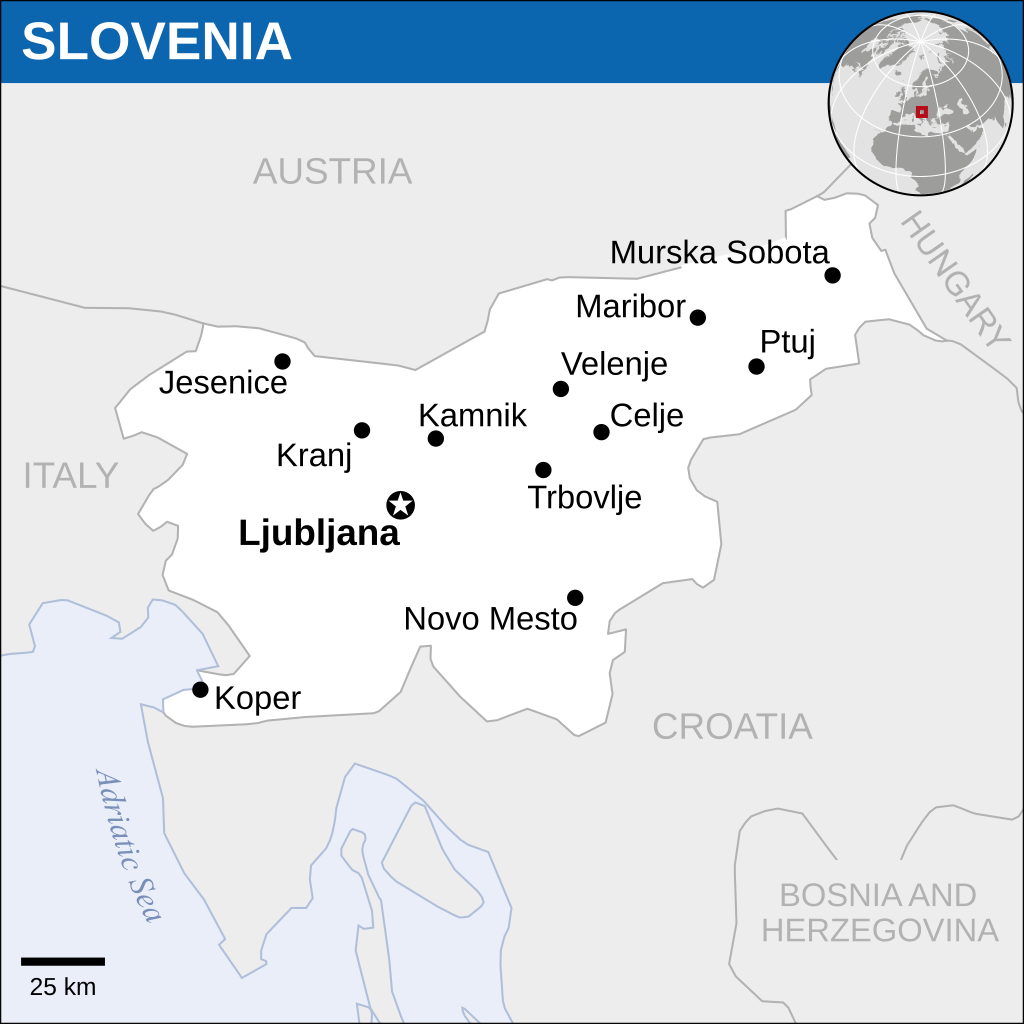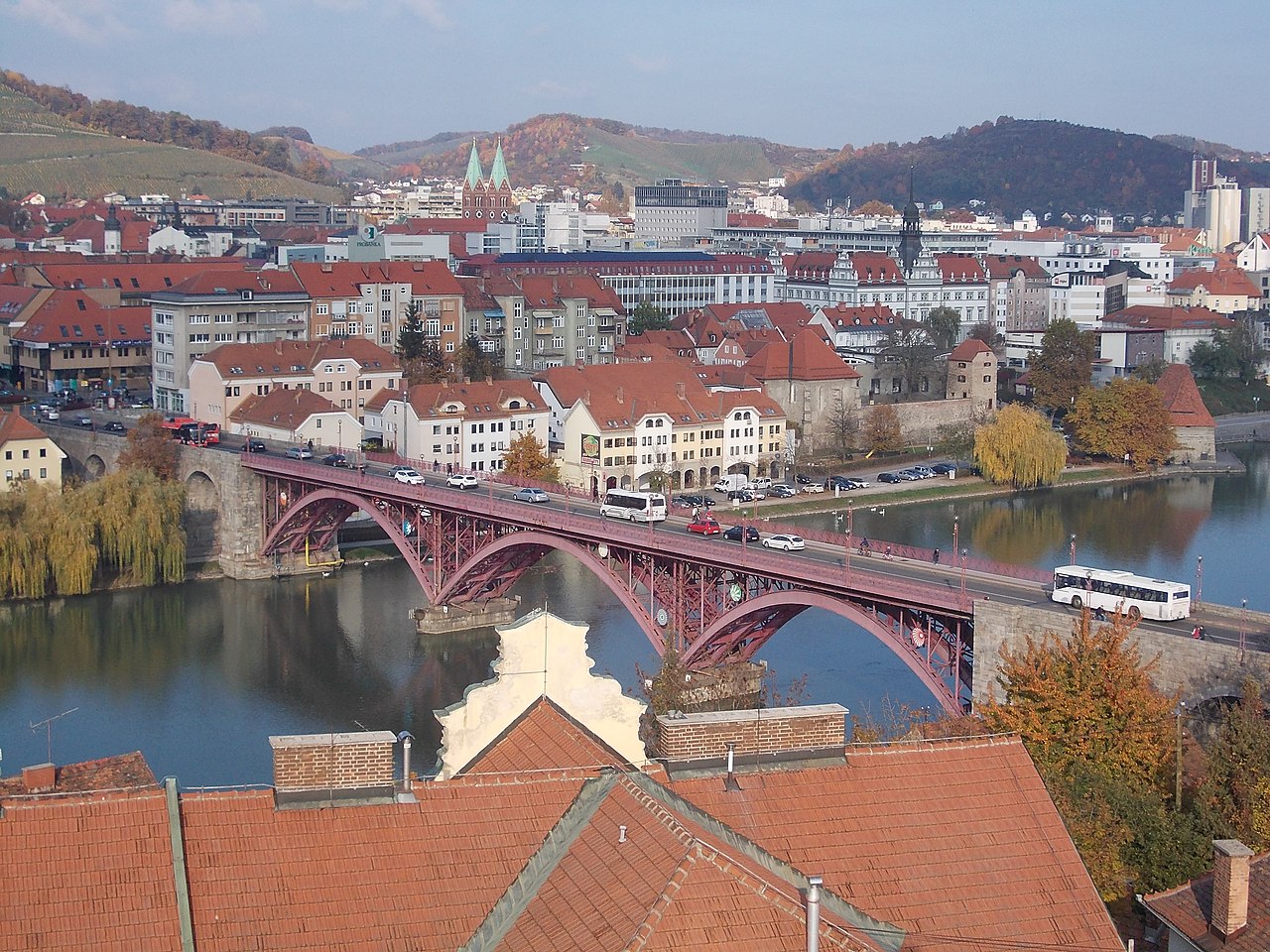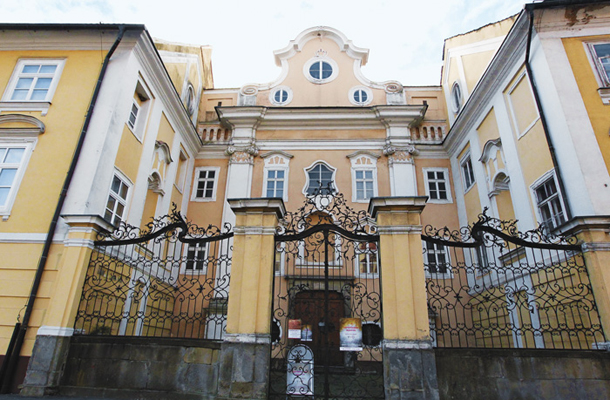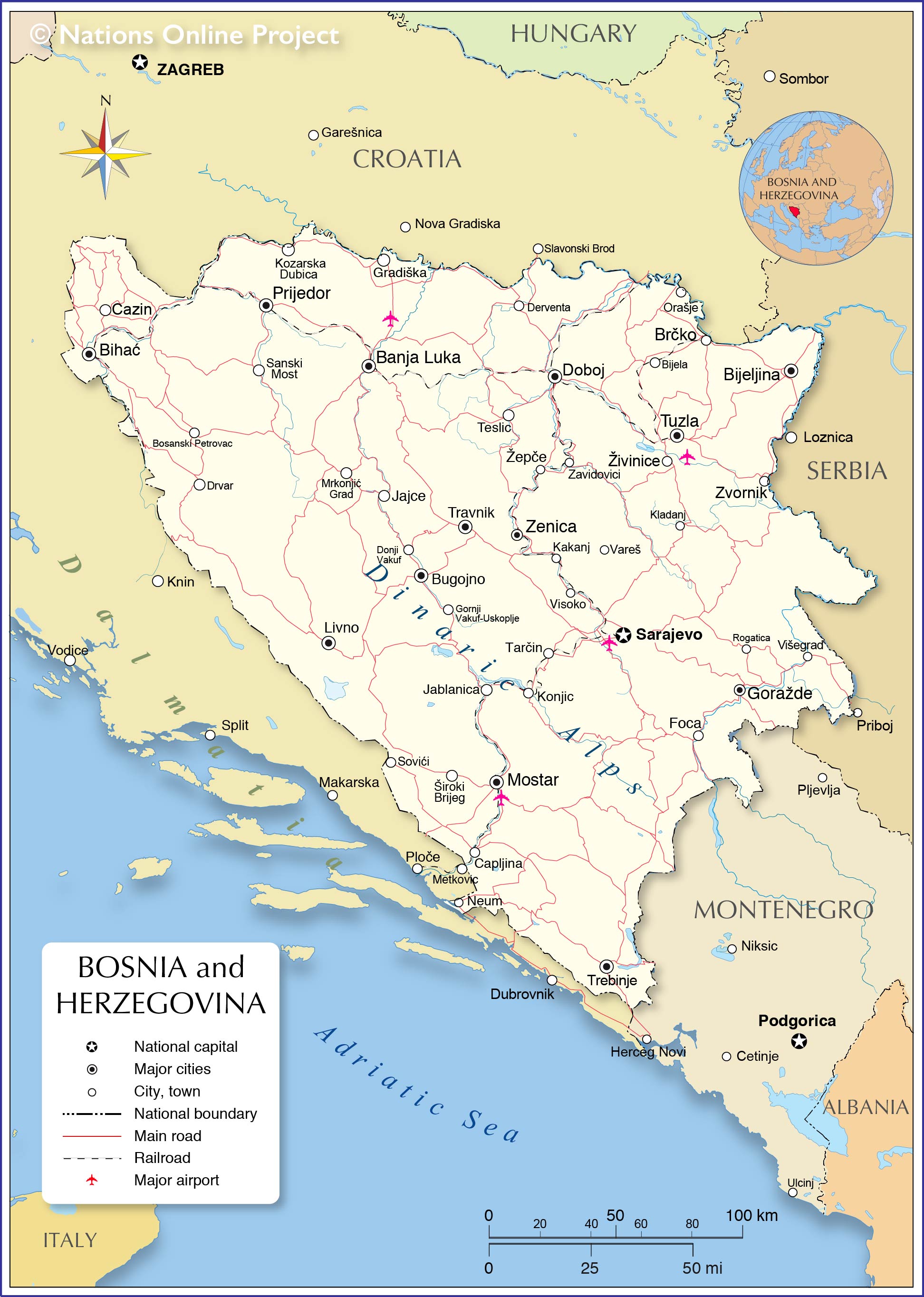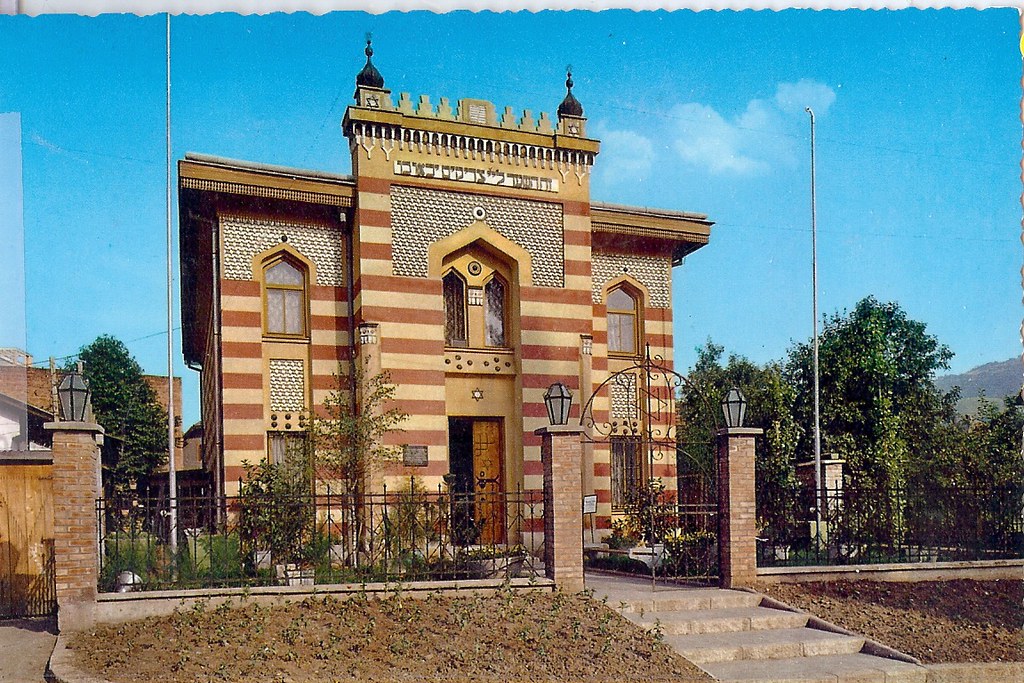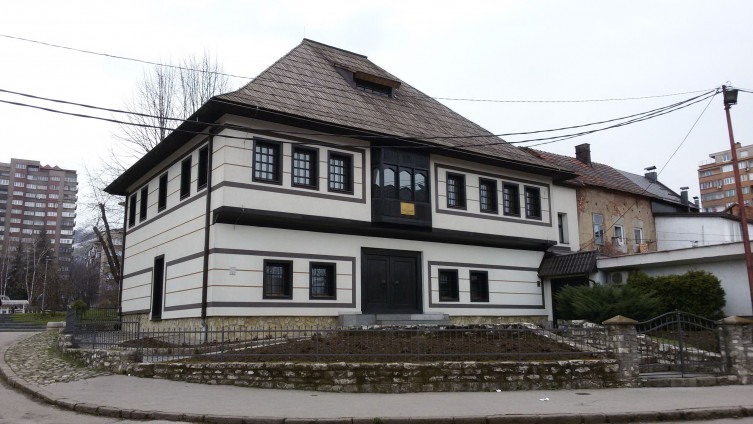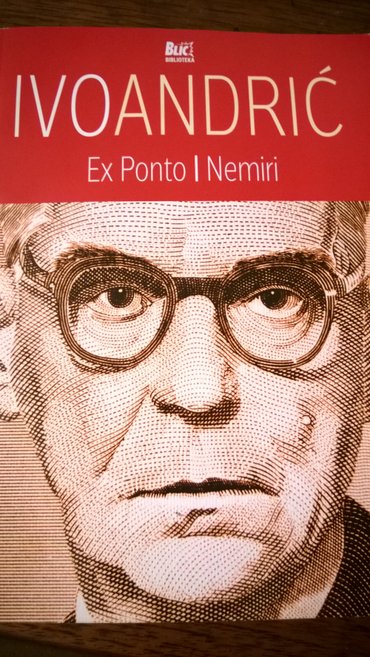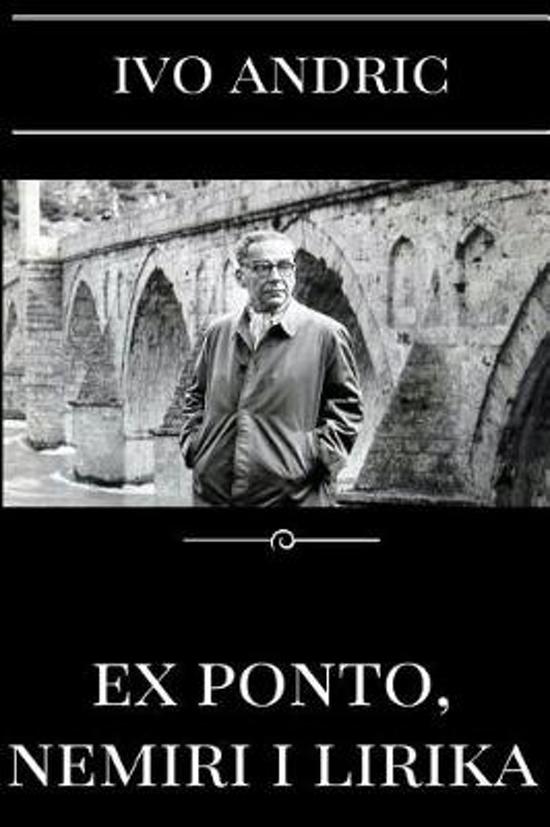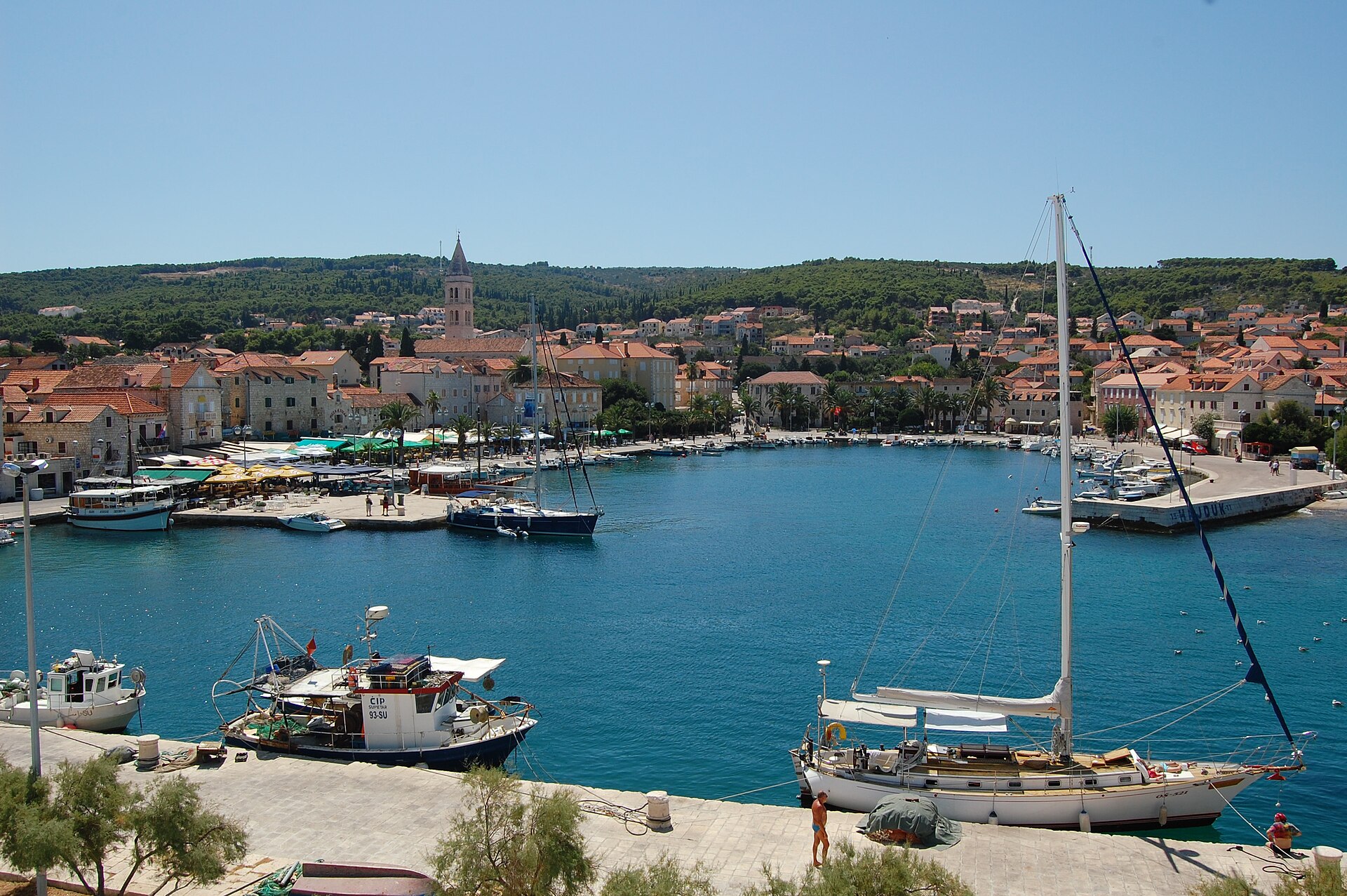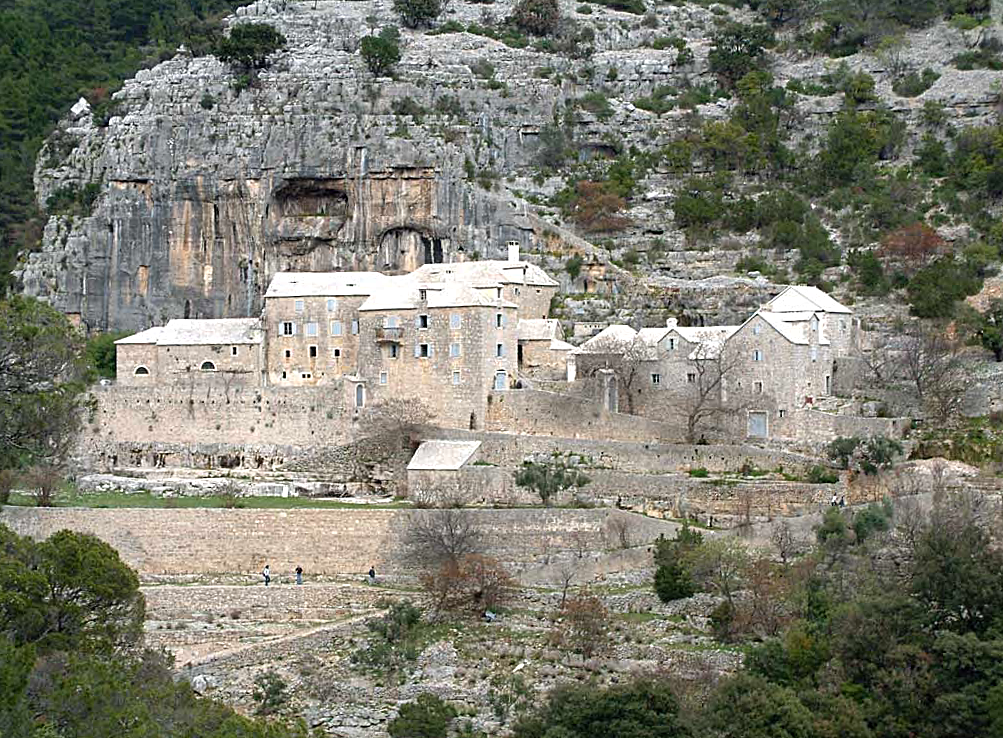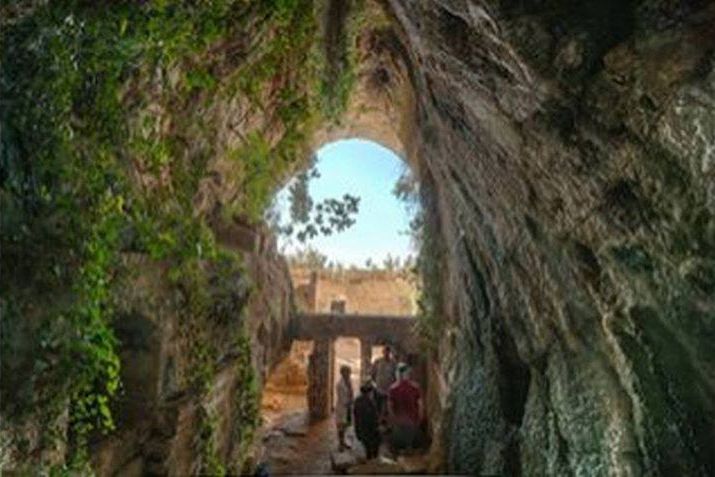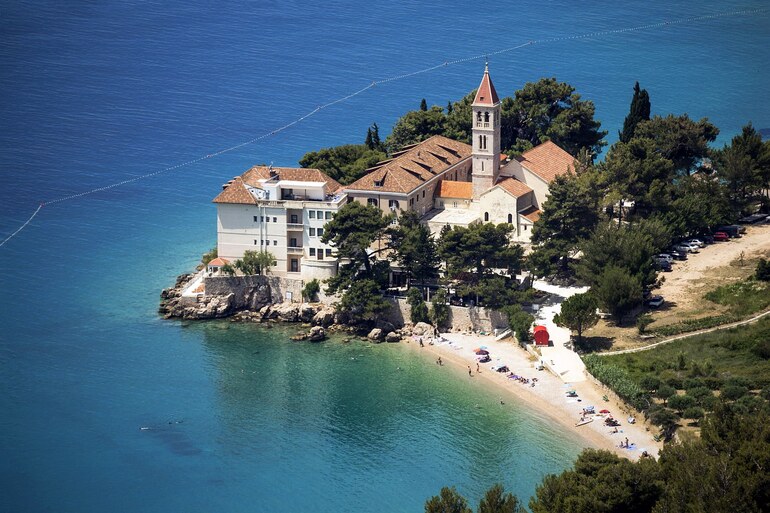Landschlacht, Switzerland, Sunday 17 November 2019
I have often believed that you can tell a lot about a person by the manner in which they live.
For example, if you, my gentle readers, wanted to comprehend the conundrum that is Canada Slim, yours truly, you would need to visit the apartment I share with the Mrs. here in the wee hamlet of Landschlacht.
It is cluttered.
I like to physically surround myself with books in the dim hope that I will somehow absorb into my system the knowledge within these tomes.
Two subjects dominate my library: travel and history.
Though there are certainly books connected with teaching and languages, more space is taken up with travel and history.
Half of the volumes of these dominant topics have a personal connection with me, for I have done some travel and the history of the places I have visited has always fascinated me.
For example, I spent a week in Serbia, primarily in Belgrade, and I possess an entire shelf of literature dedicated to that week.

Above: Belgrade by night
I long to understand what I have seen and love to share what I have understood.
Every person has their interests to which they gravitate towards when they travel.
I know those who belong on beaches and others who seek sanctuary in pubs and watering holes.
Some need to actively exert themselves in a sport or recreational activity, while others simply wish to sit or lie about.
My wife has a morbid fascination with all things funereal like cemeteries, ossuaries and hospitals, while I seek to educate myself on the culture and literature of the new found land I am visiting.

Above: Braque Triptych, Rogier van der Weyden
I must confess to being a bit of a barbarian vis à vis the world of art so I often may miss museums that others rave on and on about.
But tell me of a writer once living and/or dying in a place and I make my way to that site as quickly as I can.
And I linger therein until the constraints of a tourist’s schedule and the limits of a museum’s patience are tested.

Above: William Shakespeare’s Birthplace, Stratford-upon-Avon, England
As I have said, you can tell volumes about a person when you view how they live, for one’s lodgings show one’s life priorities, what he chooses to remember and what he prefers to forget.
“Life is such that we must often be ashamed of the best things it holds, hiding them away from everyone, even from those closest to us.”
(Ivo Andric, Signs by the Roadside)
A while back I began to write about the Memorial Museum and the fascinating life of Ivo Andric.

Above: Ivo Andric, 1961
Ivo Andric (1892 – 1975) was a Yugoslav novelist, poet and short story writer who won the Nobel Prize in Literature in 1961.
In the years following Andrić’s death, the Belgrade apartment where he spent much of World War II and the rest of his life was converted into a museum and a nearby street corner was named in his honour.
A number of other cities in the former Yugoslavia also have streets bearing his name.
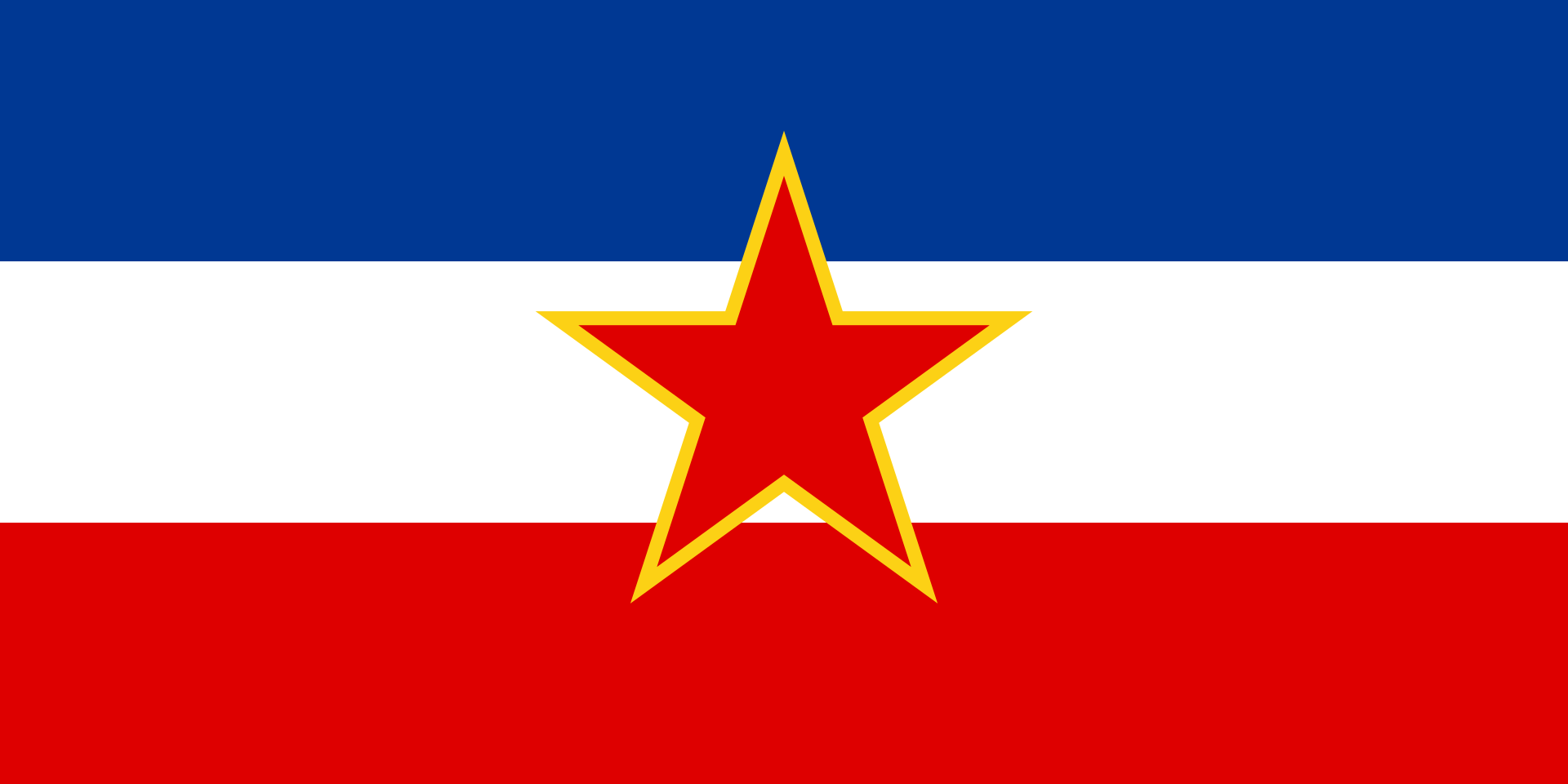
Above: Flag of the Socialist Republic of Yugoslavia (1945 – 1992)
In 2012, filmmaker Emir Kusturica began construction of an ethno-town in eastern Bosnia that is named after Andrić.

Above: Andricgrad, Bosnia-Herzegovina
As Yugoslavia’s only Nobel Prize-winning writer, Andrić was well known and respected in his native country during his lifetime.
In Bosnia and Herzegovina, beginning in the 1950s and continuing past the breakup of Yugoslavia, his works have been disparaged by Bosniak literary critics for their supposed anti-Muslim bias.
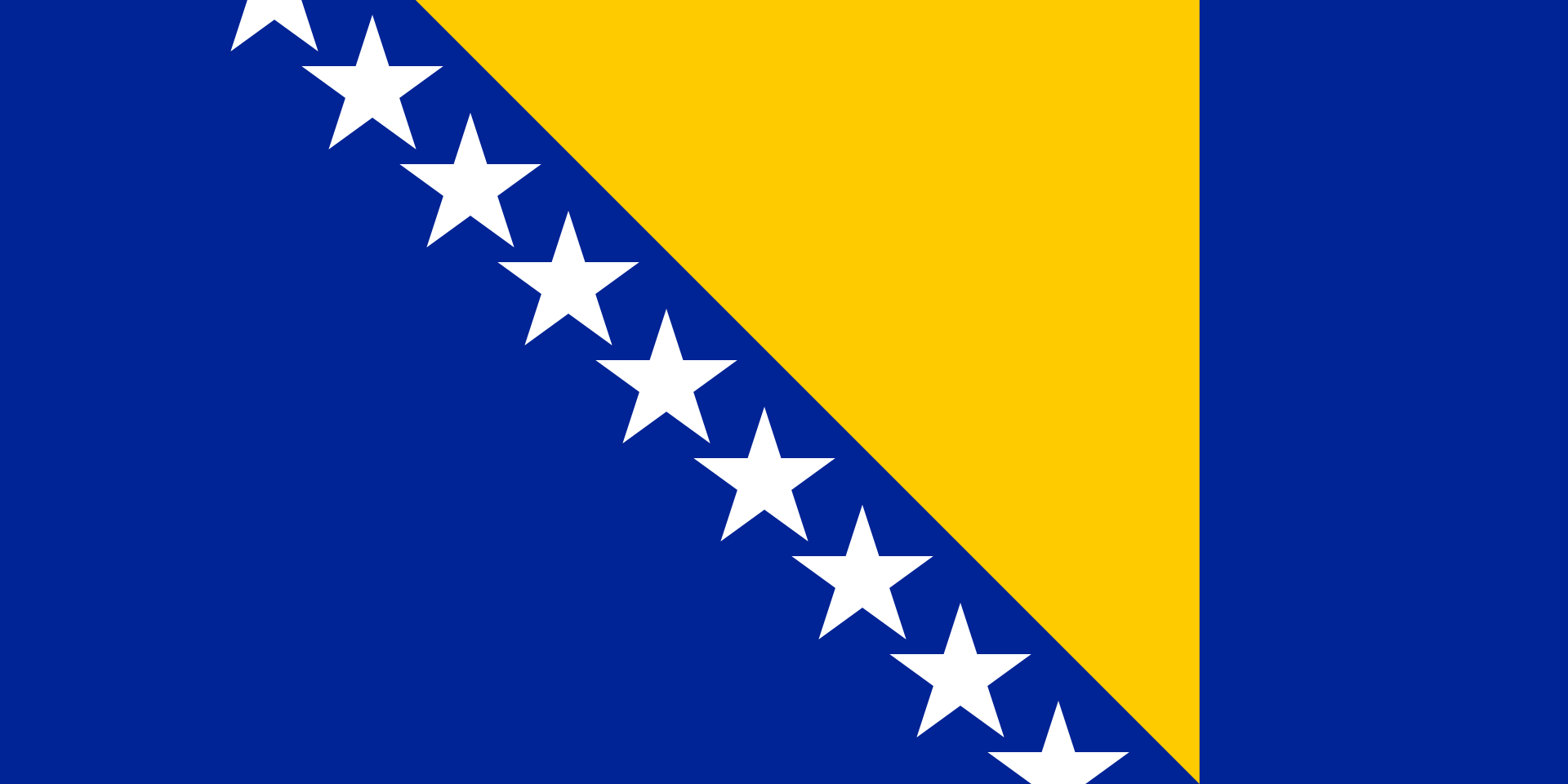
Above: Flag of Bosnia – Herzegovina
In Croatia, his works were long shunned for nationalist reasons, and even briefly blacklisted following Yugoslavia’s dissolution, but were rehabilitated by the literary community at the start of the 21st century.
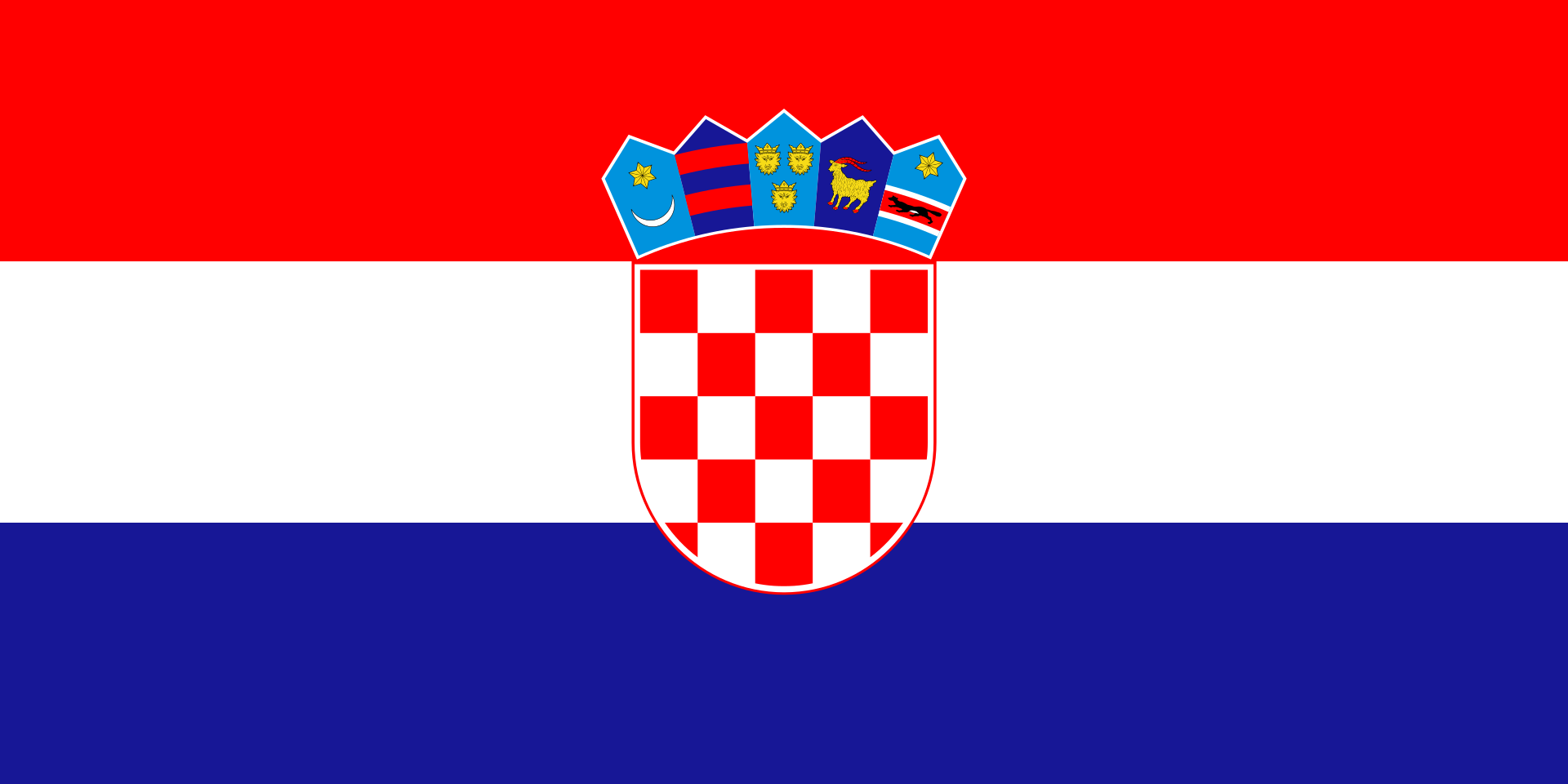
Above: Flag of Croatia
He is highly regarded in Serbia for his contributions to Serbian literature.
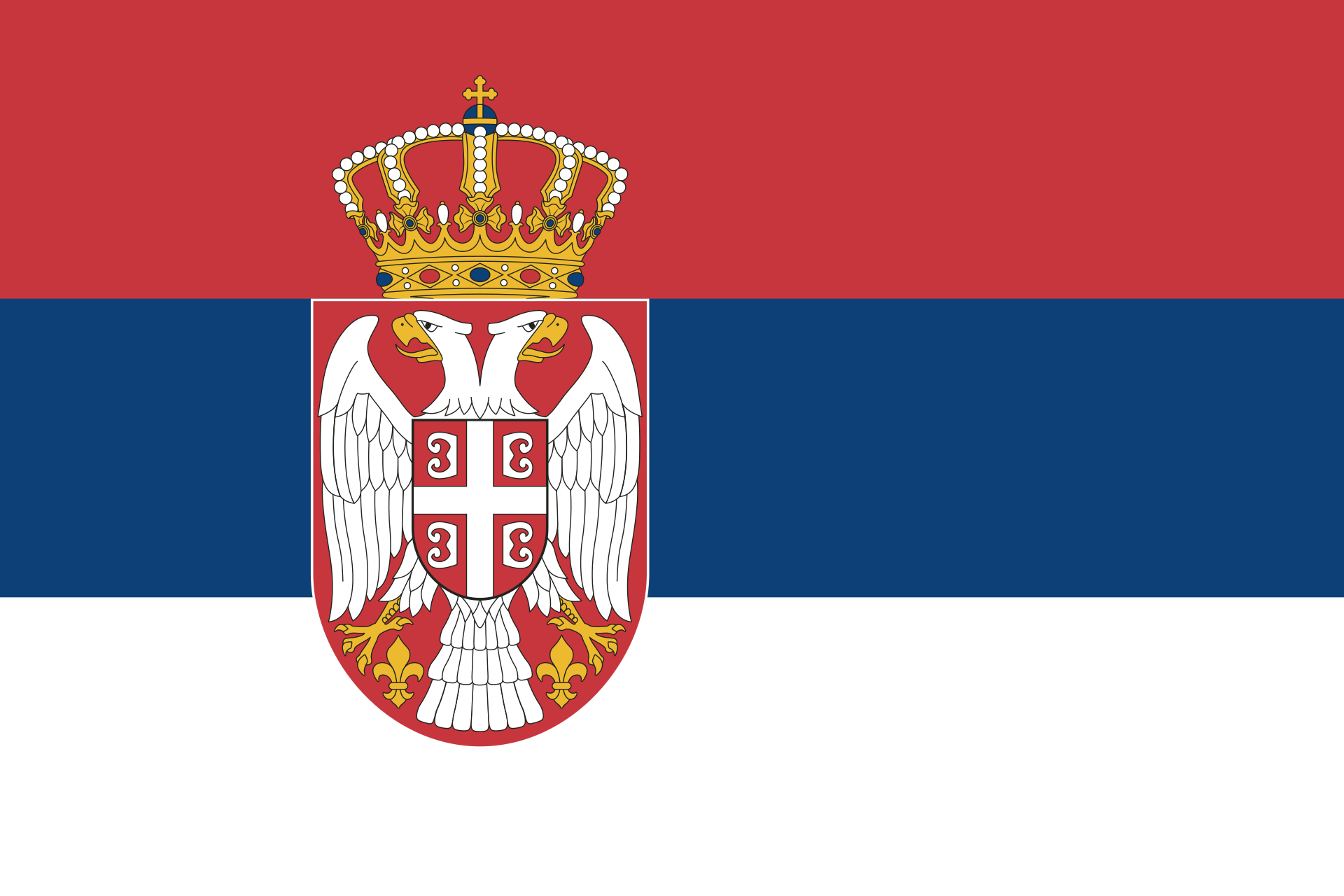
Above: Flag of Serbia
I have written about Andric and continue to do so here and in two further posts to come, because I am fascinated by his life and how he lived that life.
I have written about how Andric was raised and educated in the Balkans and abroad.

Everytime I think of Andric I recall a conversation I had once with Nesha Obranovic, my Serbian host in Belgrade.
He spoke of his reluctance to wield weapons for the Serbian military, because for him the idea of Serbia being separate from a united Yugoslavia seemed somewhat strange.
Because we must remember that the nation of Serbia as we now know it is a recent invention that resulted after the break-up of Yugoslavia in 2000.

Above: Map of the Kingdom of Yugoslavia (1918 – 1941) and map of the Socialist Republic of Yugoslavia (1945 – 1992)
Yugoslavia, for all its many faults and flaws under the iron rule of Josip Broz Tito (1892 – 1980), was a union of Slovenes, Croatians, Bosnians, Montenegrese, Macedonians and Serbians, with more in common with each other than different.
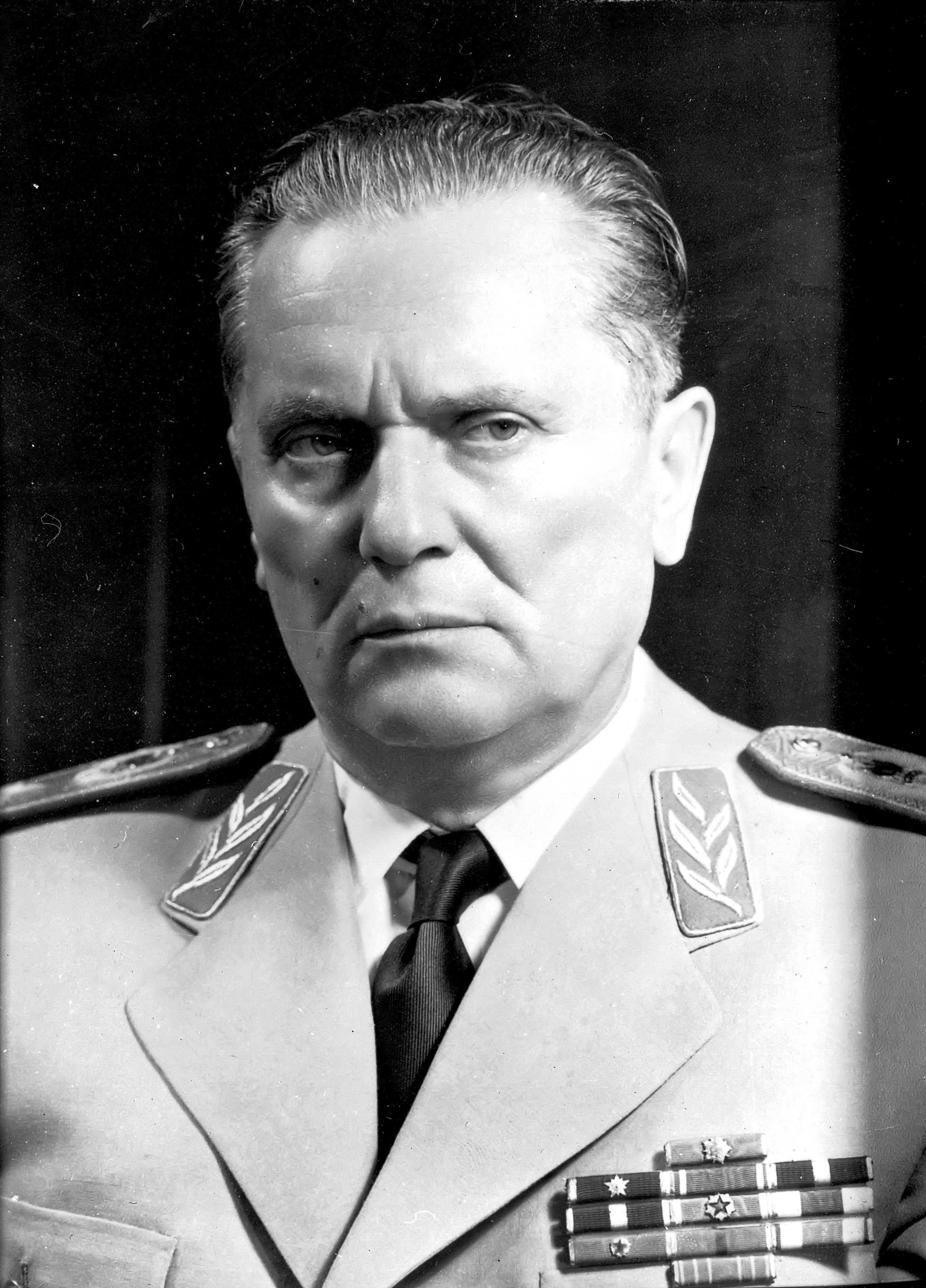
Above: Josip Broz Tito (1892 – 1980)
And though the drive for self-destiny led to the inevitable break-up of Yugoslavia into the modern states of Slovenia, Croatia, Bosnia-Herzegovina, Montenegro, North Macedonia and Serbia, it was nonetheless for many unnatural to wage war against those who had once upon a time been brother Yugoslavs.
Certainly Andric was born a Bosnian and died a Serbian, but his writing is simultaneously both and neither Bosnian and Serbian but rather universal.
“I believe that if people knew how agonizing living my life has been, they would be more willing to forgive my wrongdoings and all the good I have failed to do, and still have a shred of compassion left over for me.”
(Ivo Andric, Signs by the Roadside)

Above: Ivo Andric, 1951
Nesha was born in Yugoslavia, but because of historical forces beyond his control he is Serbian.
Nesha does not feel the need to automatically hate Slovenes, Croats, Bosnians, Montenegrese or Macedonians, because, in their desire for independence, blood was shed copiously by Serbian and non-Serbian alike.
Under Slobodan Milosevic (1941 – 2006), much violence was committed in the name of Serbia against fellow Yugoslavs.
But not all Serbians were / are like Milosevic.
Nesha certainly is not.
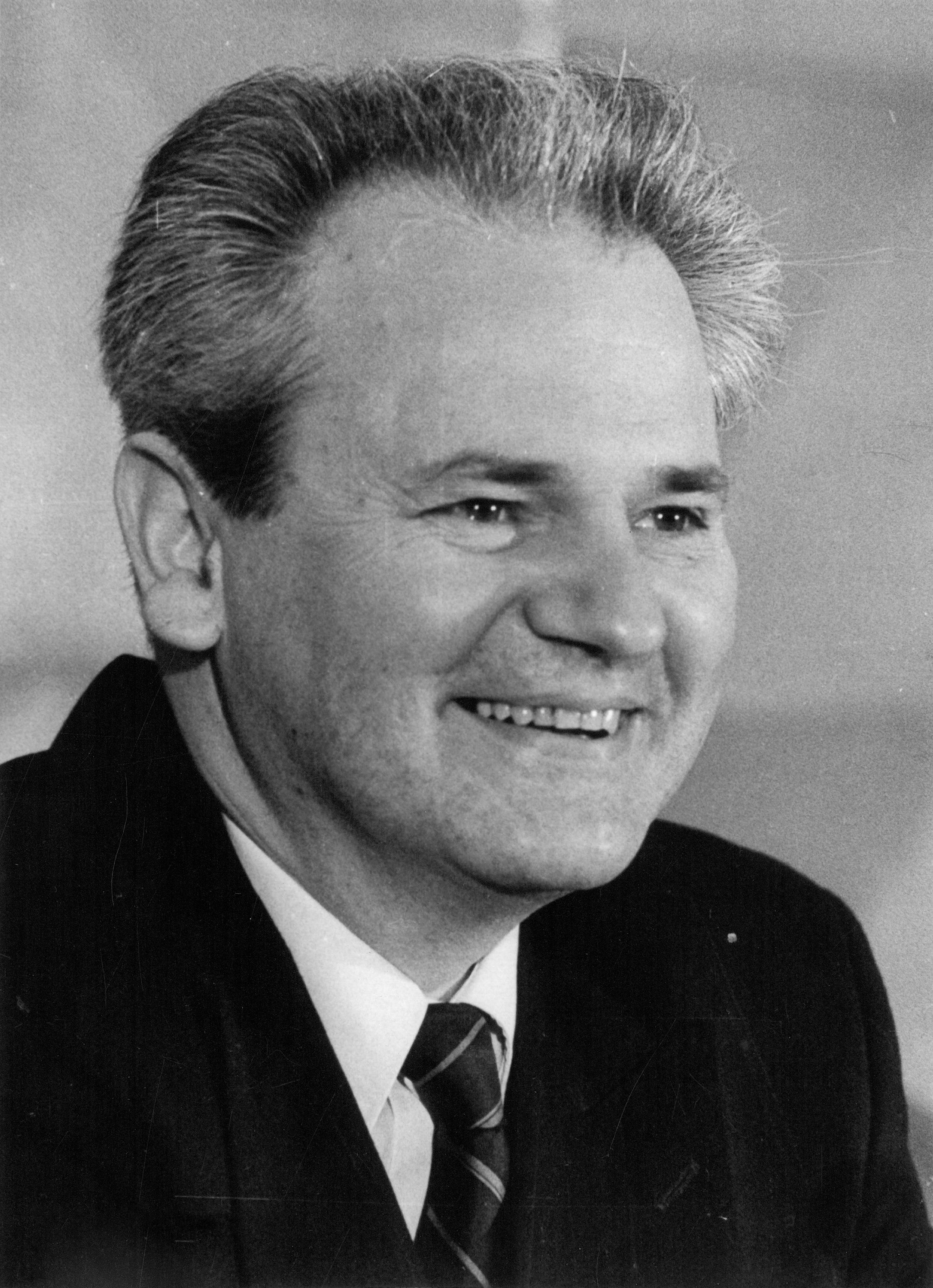
Above: Slobodan Milosevic, 1988
Nesha is one of the most honourable men it has been my privilege to know as a colleague and friend here in Switzerland.
He is Serbian, but he isn’t all Serbians.
He was born in Belgrade, but he is not the government.
Like many Americans who are proud of America but are ashamed of their political past, Nesha is proud of Serbia but not always enamored with all aspects of Serbia’s past.
Just as I try to judge others on a case by case basis, Nesha similarly does the same.
One of the reasons we get along so well.

Above: House of the National Assembly, Belgrade, Serbia
It is this universality of thought and behaviour that attracts me to the life and works of Ivo Andric.
To be able to write universally one must be at one with the world, and it was the experiences of Andric between the two World Wars that would lead him to write works that would be universally understood and loved.
Come with me now, back into the Memorial Museum of Ivo Andric and let us look at what makes a man of letters….
Belgrade, Serbia, 5 April 2018
I have already written of how Ivo Andric, the only Serb to ever win the Nobel Prize for Literature, was born into a family of a Catholic father and an Orthodox mother near Travnik in present day Bosnia.
I wrote of how he studied philosophy, Slavic history and literature, and how following his graduation he took to writing poetry regularly.

Above: Birthplace of Ivo Andric, Dolac, Bosnia
The year was 1914 and Europe was dominated by ambitious imperial states.
A series of wars in the 1860s and 1870s established Germany as Europe’s superior military power.
In the 1890s France and Russia formed an alliance to counter the might of Germany and its close ally, Austria – Hungary.
In the first decade of the 20th century, Britain, feeling threatened by the growth of the German navy, abandoned its traditonal isolationism and formed an entente – a loose unofficial alliance – with France and Russia.
Peace was maintained by a balance of power between the two hostile alliances.
The European states expanded their armed forces and equipped them with the latest technology.
They developed plans for the rapid mobilization of mass conscript armies that threatened to turn any confrontation into full scale war.
Every country felt that the side that struck first would hace a decisive advantage.
The behaviour of Germany’s leader, Kaiser Wilhelm II, was aggressive and erratic, particularly during the Moroccan Crisis of 1911, but the spark that ignited war came in the Balkans, where states, such as Serbia, had become independent of Ottoman Turkish rule in the 19th century.

Above: Kaiser Wilhelm II (1859 – 1941)
(The Agadir Crisis, Agadir Incident or Second Moroccan Crisis – also known as the Panthersprung in German – was a brief international crisis sparked by the deployment of a substantial force of French troops in the interior of Morocco in April 1911.
Germany did not object to France’s expansion, but wanted territorial compensation for itself.
Berlin threatened warfare, sent a gunboat and stirred up angry German nationalists.
Negotiations between Berlin and Paris resolved the crisis:
France took over Morocco as a protectorate in exchange for territorial concessions to Germany from the French Congo, while Spain was satisfied with a change in its boundary with Morocco.
The British cabinet, however, was alarmed at Germany’s aggressiveness toward France.
David Lloyd George made a dramatic “Mansion House” speech that denounced the German move as an intolerable humiliation.
There was talk of war, and Germany backed down.
Relations between Berlin and London remained sour.)

Above: French troops on the move in Morocco
Russia had ambitions to spread its influence in the Balkans as the champion of the Slav peoples.
This led to hostile relations with Austria – Hungary, which was at odds with restless Slav minorities within its own borders.
Austria – Hungary’s ruler, Emperor Franz Joseph, has come to the throne in 1849.
His regime was splendid in its public ceremonies but shaky in its political foundations.
In 1908 Austria – Hungary annexed Bosnia – Herzegovina, a province with a mixed Serb, Croat and Bosnian Muslim population.
This annexation angered Serbia, which had its own ambitions to unite the region’s Slav population under its rule.
The Austro – Hungarian government felt the rising power of Serbia was a threat to its authority over its restless Slav subjects in the Balkans.
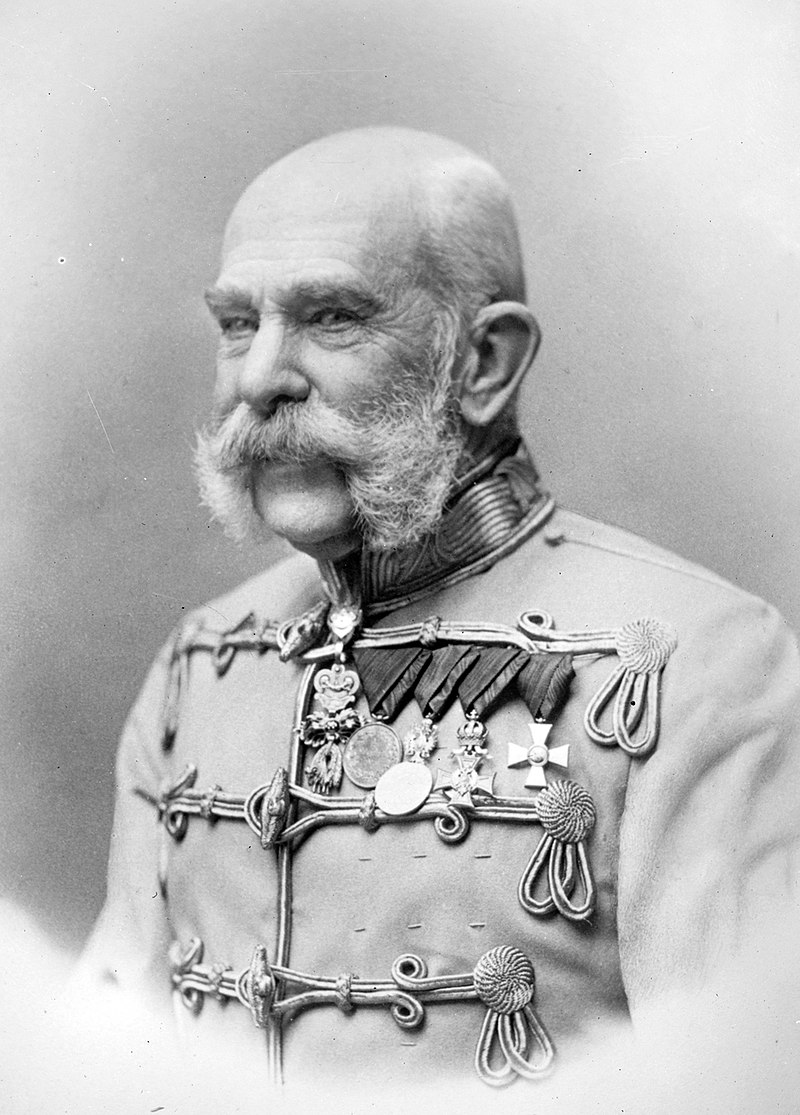
Above: Franz Joseph I (1830 – 1916)
Franz Ferdinand was the nephew of the Emperor.
He became heir apparent to the Habsburg throne in 1889.
His relations with the Emperor were soured by his insistence on marrying an impoverished Czech aristocrat, Sophie Chotek, in 1900.
He was forced to agree to humiliating terms in order to marry her.
She was denied royal status and any offspring would be barred from inheriting the throne.
Franz Ferdinand’s political position varied over time, but he was viewed by the Austro – Hungarian establishment as dangerously liberal on the key issue of Slav nationalism.
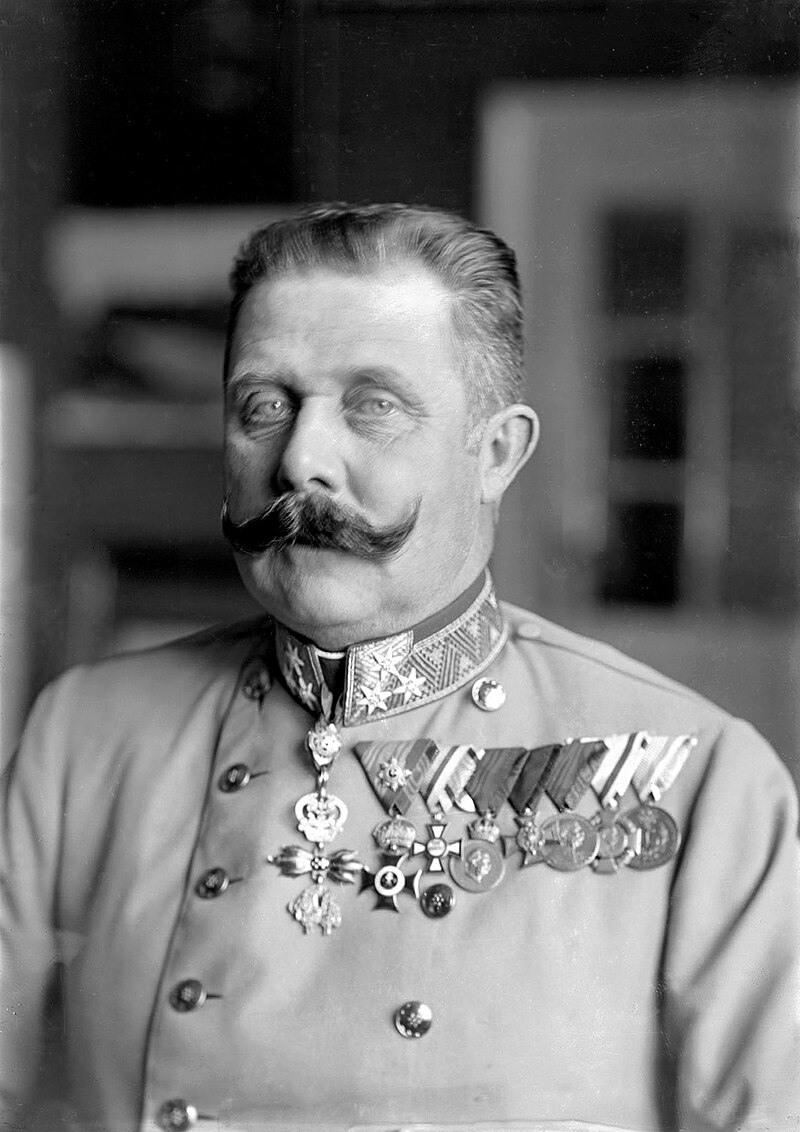
Above: Franz Ferdinand (1863 – 1914)
Archduke Franz Ferdinand’s 28 June 1914 visit to Sarajevo, the capital of Bosnia – Herzegovina, was a blunt assertion of imperial authority in the recently annexed province.
Even his timing was provocative:
28 June was a day sacred to Serb nationalists as the anniversary of the 1389 Battle of Kosovo, in which a defeat by the Turks had cost Serbia its independence.
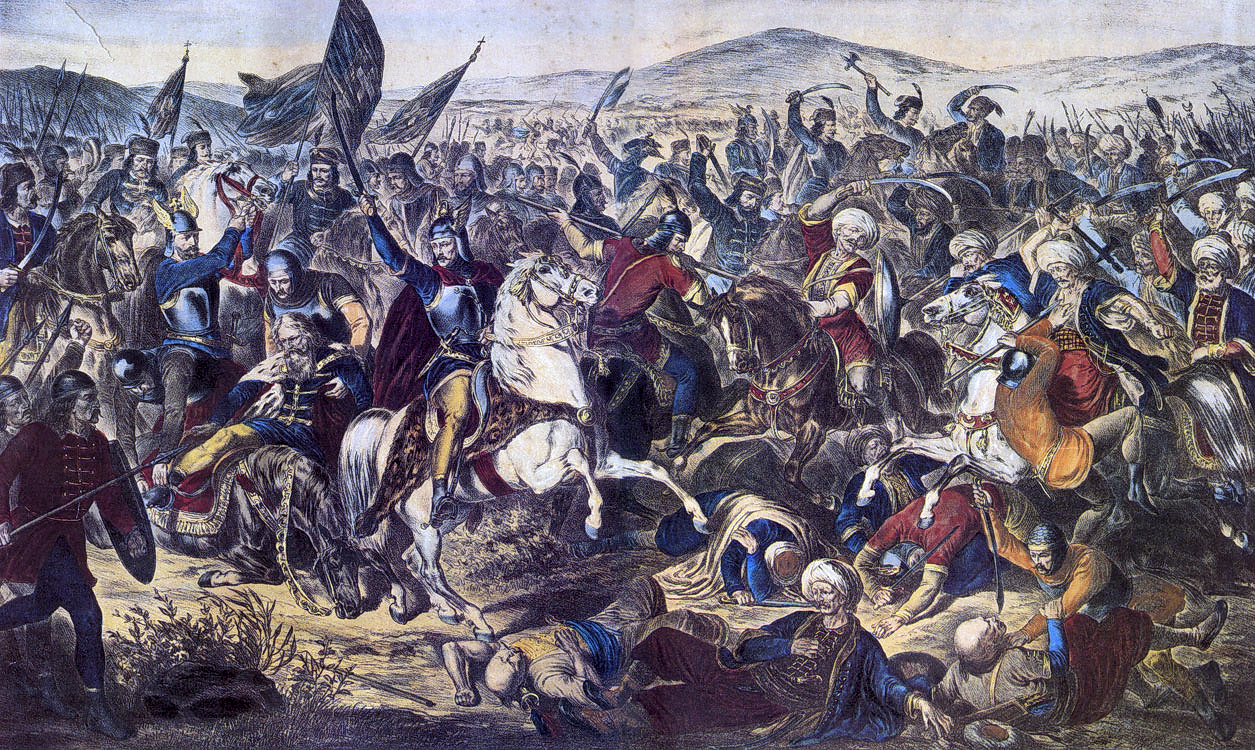
Above: Battle of Kosovo, Adam Stefanovic
Bosnian Serb separatists, who were armed, trained and organized by shadowy nationalist groups and military intelligence officers in Serbia, had been carrying out attacks against the Austro – Hungarian authorities in Bosnia – Herzegovina.
The Austrian government had received specific warning of a planned assassination attempt against the Archduke, but the visit went ahead regardless.
To cancel it or even mount a heavy-handed security operation would have been an admission that the Habsburgs did not fully control one of the provinces in their empire.
The Archduke’s planned route and schedule were publicized in advance of the visit.

Above: Flag of the Habsburg Monarchy (1804 – 1918)
As the motorcade drove along the quay by the Miljacka River, one of the conspirators, Nedjelko Cabrinovic, threw a bomb that bounced off the back of the Archduke’s car and exploded.
This injured a number of bystanders, including a police officer.
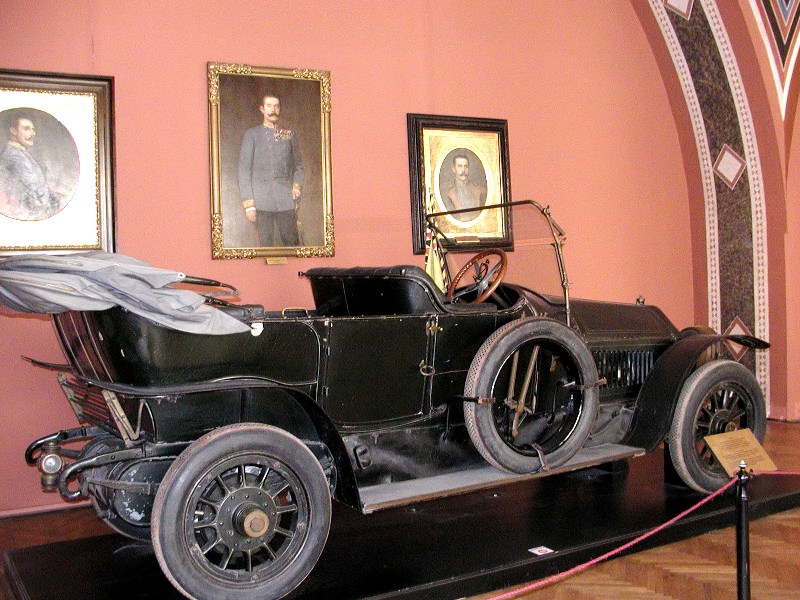
Above: The 1911 Gräf & Stift 28/32 Double Phaeton in which Franz Ferdinand and Sophie were riding on 28 June 1914
Cabrinovic then swallowed a cyanide pill and jumped into the shallow river, where he was arrested, the cyanide proving non-lethal.

Above: Nedeljko Cabrinovic (1896 – 1916)
Angered and shocked by the incident, Franz Ferdinand continued making his way to the town hall.
The conspirators dispersed into the crowds, their assassination bid having seemingly ended in failure.

Above: Franz Ferdinand and Sophie leaving Sarajevo Town Hall, 28 June 1914
Gavrilo Princip (19) went into a delicatessan to buy a sandwich.
Coming out of the shop, Princip found the Archduke’s car stopped directly in front of him.
Franz Ferdinand had decided to visit the injured police officer in hospital, but his driver had taken a wrong turn and was trying to reverse.
Seizing his opportunity, Princip pulled out his pistol and fired twice, hitting the Archduke in the neck and his wife in the abdomen.
“Sophie, Sophie, don’t die!
Stay alive for our children!” were the last words the Archduke spoke.
The couple died within minutes while still in the car.

Princip tried to kill himself but was overpowered by onlookers and arrested.

Above: Gavrilo Princip (1894 – 1918)
The news of the couple’s death was a shock to the Habsburg court.
There was no state funeral.
Franz Ferdinand and Sophie were interred side by side in a private crypt at Artstetten Castle in the Danube valley.

Above: Arstetten Castle, Austria
Emperor Franz Joseph was privately relieved that he would never be succeeded by a nephew he neither liked nor trusted.
“A higher power has restored that order which I could unfortunately not maintain.“, the Emperor said.

Above: Portrait of Franz Joseph, 1899, Philip de Laszlo
But the public affront to the Austro – Hungarian state was gross.
Although there was no clear evidence that the Serbian government had been directly involved, the operation had definitely been planned and organized in Serbia.
The planning of the operation was traced to the head of Serbian military intelligence, Colonel Dragutin Dimitrijevic.
This was enough.
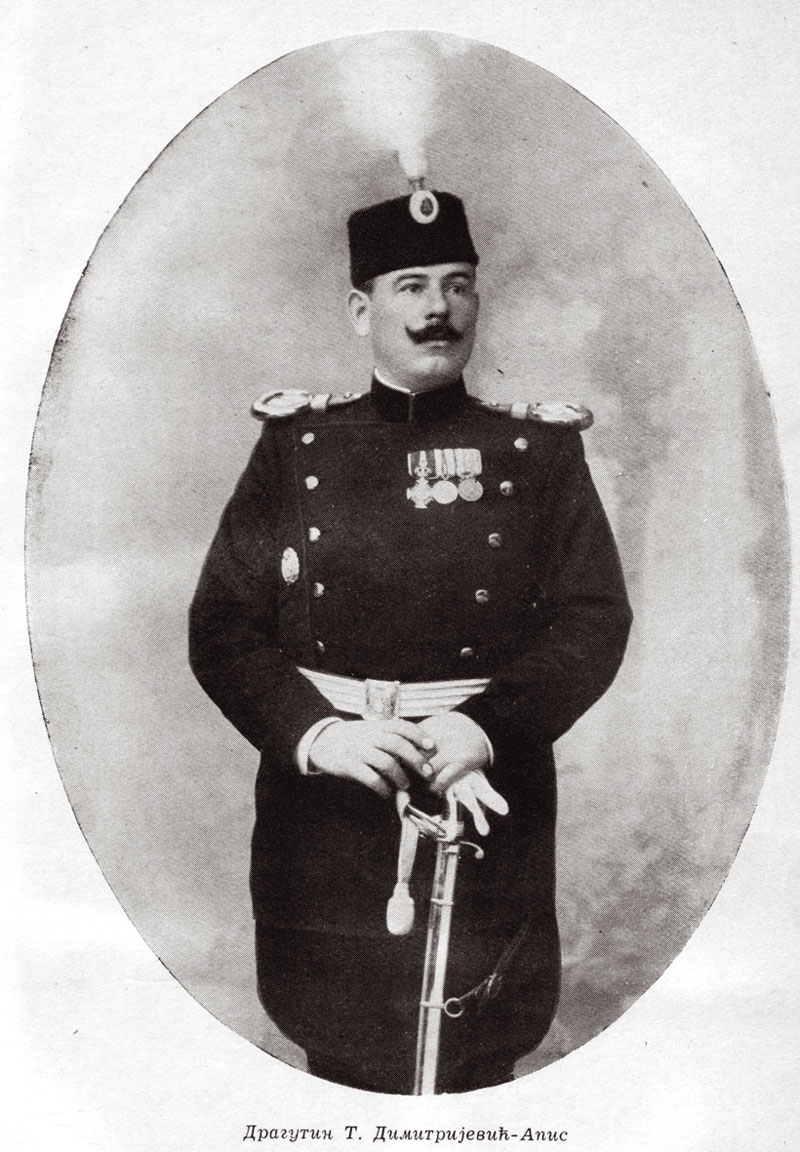
Above: Drazutin Dimitrijevic (1876 – 1917)
A band of assassins, with Serbian backing, had killed the heir to the throne.
Austro – Hungary’s honour, prestige and credibility required that Serbia be made to pay.

Above: Route of the assassins, Belgrade to Sarajevo, 1914
Austro – Hungarian ruling circles were split between warhawks and doves.
Chief of the General Staff Count Franz Conrad von Hötzendorf had long sought a war with Serbia.
He saw the assassinations as an ideal pretext for military action.

Above: Franz Conrad von Hötzendorf (1852 – 1925)
Other important figures, including Count István Tisza, Prime Minister of Hungary, were more cautious, preferring a diplomatic solution.

Above: István Tisza (1861 – 1918)
In the first week of July 1914, Austria – Hungary sought the opinion of its ally Germany.
Kaiser Wilhelm II had been outraged by the assassinations.
His advisers, including Chancellor Theobald von Bethmann – Hollweg, agreed that Austria – Hungary should be encouraged to take decisive, but unspecified, action against Serbia.
Whatever the Austro – Hungarian government chose to do, it could be assured of Germany’s support.

Above: Theobald von Bethmann – Hollweg (1856 – 1921)
This loose guarantee of German backing – often referred to as “the blank cheque” – put the warhawks firmly in control of Vienna.
Austria – Hungary then drew up a series of demands deliberately designed to prove unacceptable.
Their rejection by Serbia would provide a pretext for an attack by the Austro – Hungarian army.

Above: Flag of Austria – Hungary (1867 – 1918)
No one was planning for a full scale war.
The idea was for a swift punitive invasion followed by a harsh peace settlement to humiliate and permanently weaken Serbia.
However, nothing could happen quickly.
Much of the army was on leave, helping to bring in the harvest.
After some hesitation, the date for delivery of an ultimatum was set for 23 July.

Above: Flag of the Kingdom of Serbia (1882 – 1918)
On 23 July 1914, at 6pm, the Austro – Hungarian ambassador delivered an ultimatum to the Serbian government, starting the world on the road to war.
The ultimatum demanded that the Serbs suppress anti-Austrian terrorist organizations, stop anti-Austrian propaganda, and allow Austro – Hungarian officials to take part in the investigation of those who were responsible for the Sarajevo assassinations.
The Serbians were given 48 hours to accept the demands of the ultimatum or face war.
Serbia accepted most of them but, assured of support from Russia, rejected outright the idea of Austrian officials operating on Serbian soil.
Above: Kingdom of Serbia, 1913
Kaiser Wilhelm, returning from his holiday cruise in the North Sea, enthused over the humiliation of Serbia and suggested that war was no longer necessary.
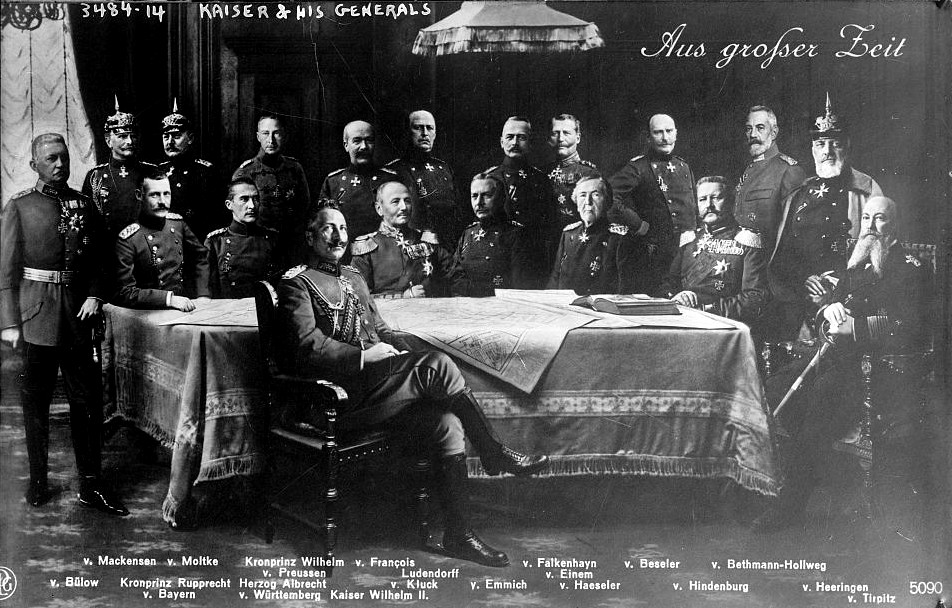
The dominant elements within the Austro – Hungarian military and political establishment did not want a diplomatic triumph.
They wanted a military victory to dismember Serbia and bolster Habsburg authority.
Thus on 28 July 1914 Austria-Hungary formally declared war on Serbia.
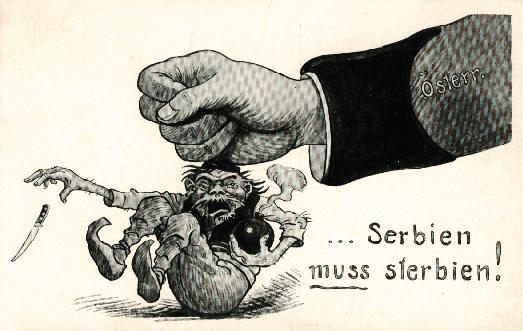
To stand by while Serbia was defeated by Austria-Hungary would have been a severe humiliation for Russia.
It would have signified the end of the long-nourished ambition to expand Russian influence in the Balkans and towards Istanbul.
So, that same day, Russia declared the mobilization of its armed forces in those regions facing Austria-Hungary.
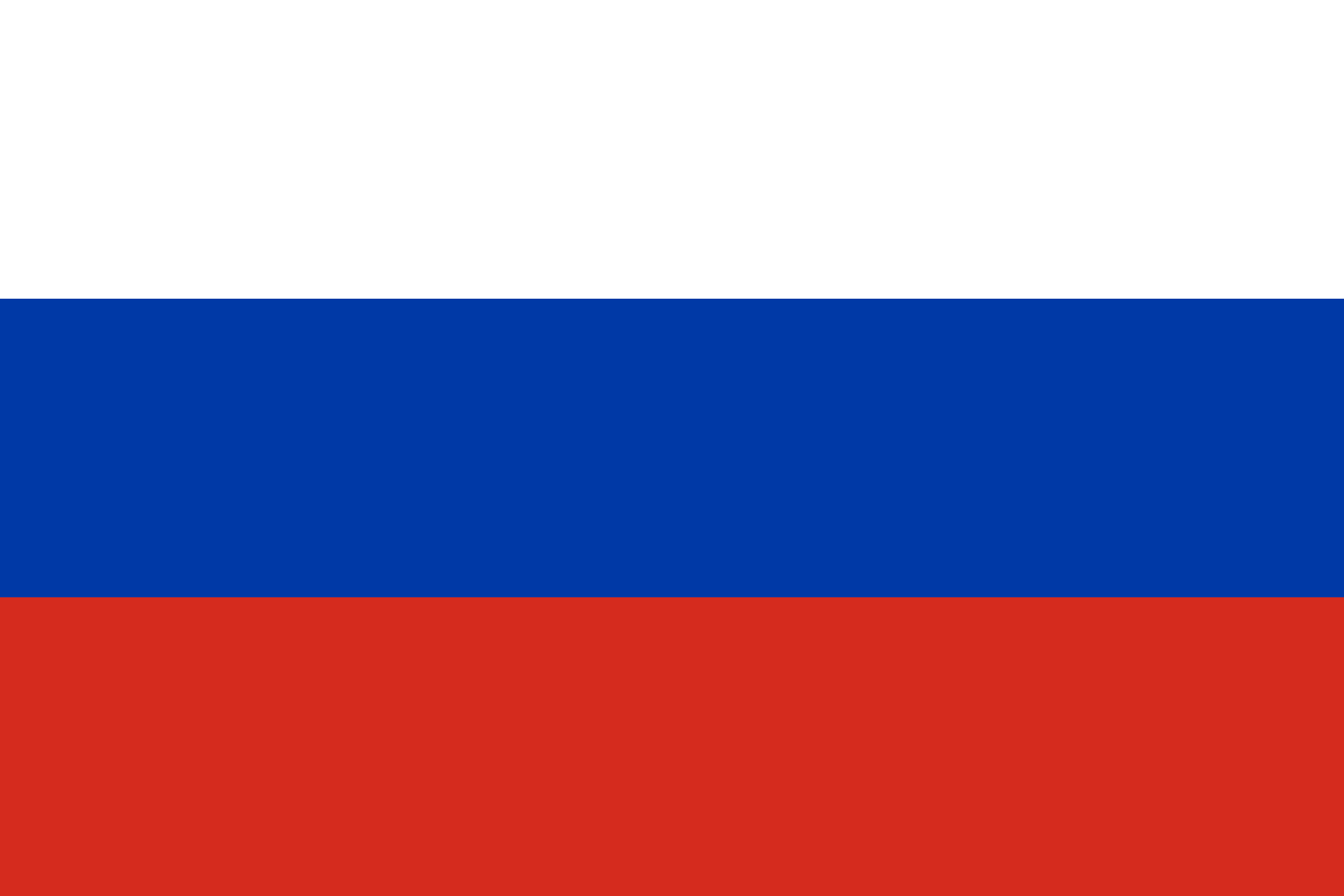
Above: Flag of the Russian Empire (1721 – 1917)
Suddenly the great European powers faced the prospect of war spreading to engulf them all.
The insecurity and crises of the last decade had strengthened rival alliances and hardened mutual suspicions.
France and Russia felt that they must stand or fall together.

Above: Flag of France
On 31 July Kaiser Wilhelm asked his Chief of the General Staff Helmuth von Moltke:
“Is the Fatherland in danger?”
Moltke answered in the affirmative.

Above: Helmuth von Moltke the Younger (1848 – 1916)
On 1 August, Germany declared war on Russia.

Above: Flag of the German Empire (1871 – 1918)
Britain was a guarantor of Belgian neutrality under the Terms of the 1839 Treaty of London.
To attack Russia’s ally France, Germany’s plan required the army to cross Belgium.
On 2 August, Germany demanded right of passage through Belgium for its troops.
When German troops entered Belgium on 3 August, Britain responded with an ultimatum demanding their withdrawl.
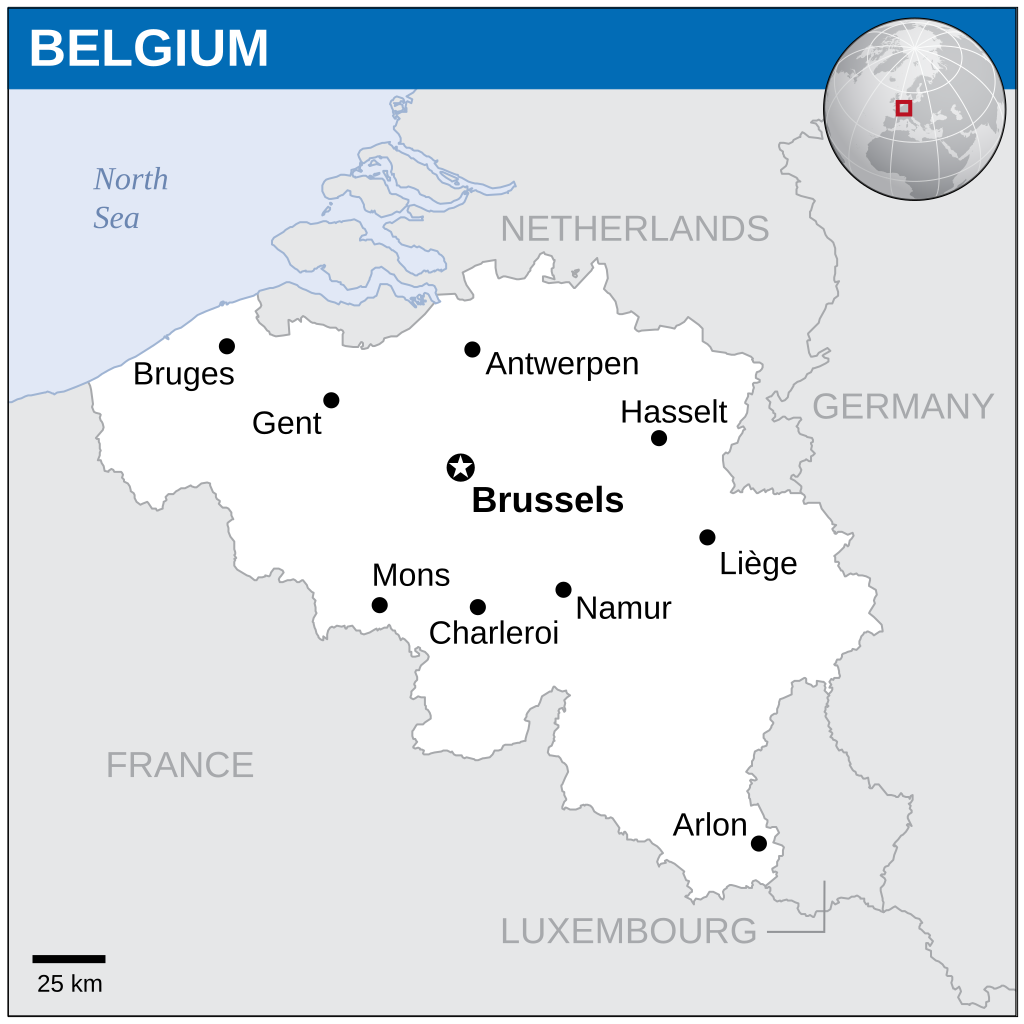
A German declaration of war on France followed on 3 August.
A British declaration of war on Germany followed on 4 August.
The war had officially begun.
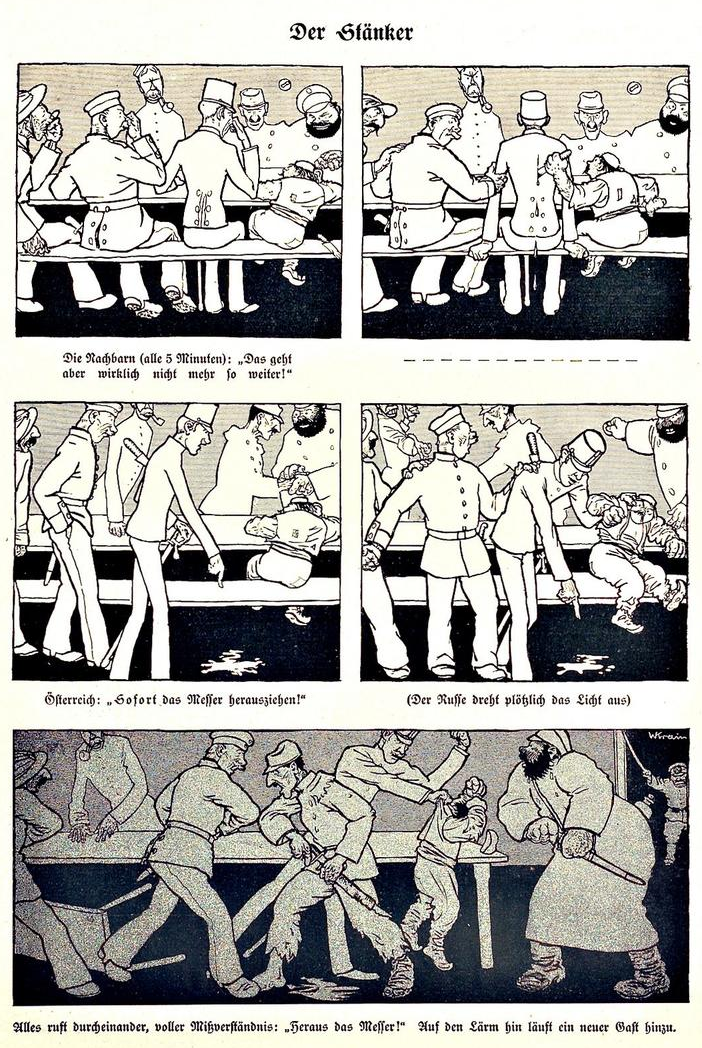
Political cartoon titled “Der Stänker” (“The Troublemaker“) that was published in the German satirical magazine Kladderadatsch on 9 August 1914, depicting the nations of Europe sitting at a table.
(1st panel) The Central Powers hold their noses in distaste as tiny Serbia joins the table, while Russia reacts with joy.
(2) Serbia stabs Austria-Hungary, to everyone’s apparent shock. Germany immediately offers support to Austria.
(3) Austria demands satisfaction from Serbia, while a relaxed Germany with hands in its pockets doesn’t notice Russia and France come to agreement in the background.
(4) Austria manhandles Serbia, while an alarmed Germany looks to an angry Russia and presumably makes an agreement with the Ottoman Empire, and France tries to talk to Britain.
(5) A general brawl erupts with Germany and France immediately confronting each other, as Britain looks on in dismay. To the right, another combatant threatens to join from the darkness.
Upon hearing the news of the assassinations, Andrić decided to leave Kraków (Poland) and return to Bosnia.
Leaving his few belongings with his landlady Andric went straight to the Station.
Above: Kraków Station
He travelled by train to Zagreb, and in mid-July, departed for the coastal city of Split with his friend, the poet and fellow South Slav nationalist Vladimir Čerina.
Andrić and Čerina spent the rest of July at the latter’s summer home in Split.
As the month progressed, the two became increasingly uneasy about the escalating political crisis that followed the Archduke’s assassination and eventually led to the outbreak of World War I.
Above: Vladimir Cerina (1891 – 1932)
“As the years go by, even in the most turbulent of lives, certain phenomena become habitual, occurring in symmetrical and repetitive patterns so that even the most unwilling and barely conscious of souls cannot help but notice them.
And, thus, one can observe his own life in advance.
He knows what October will bring, assuming the same for March, and he can also foresee the summer months.
No spiritual hygiene nor prophylactic measures (which come with time) can be of assistance nor is there any escape or fading into obscurity.
Even the greatest efforts are in vain or of very little assistance.
Diametrically opposed spiritual states, such as fear or dangerous joy or fruitful peace, shift with a calendar-like continuity occurring ineviatably, in line with the changes on Earth.”
(Ivo Andric, Signs by the Roadside)
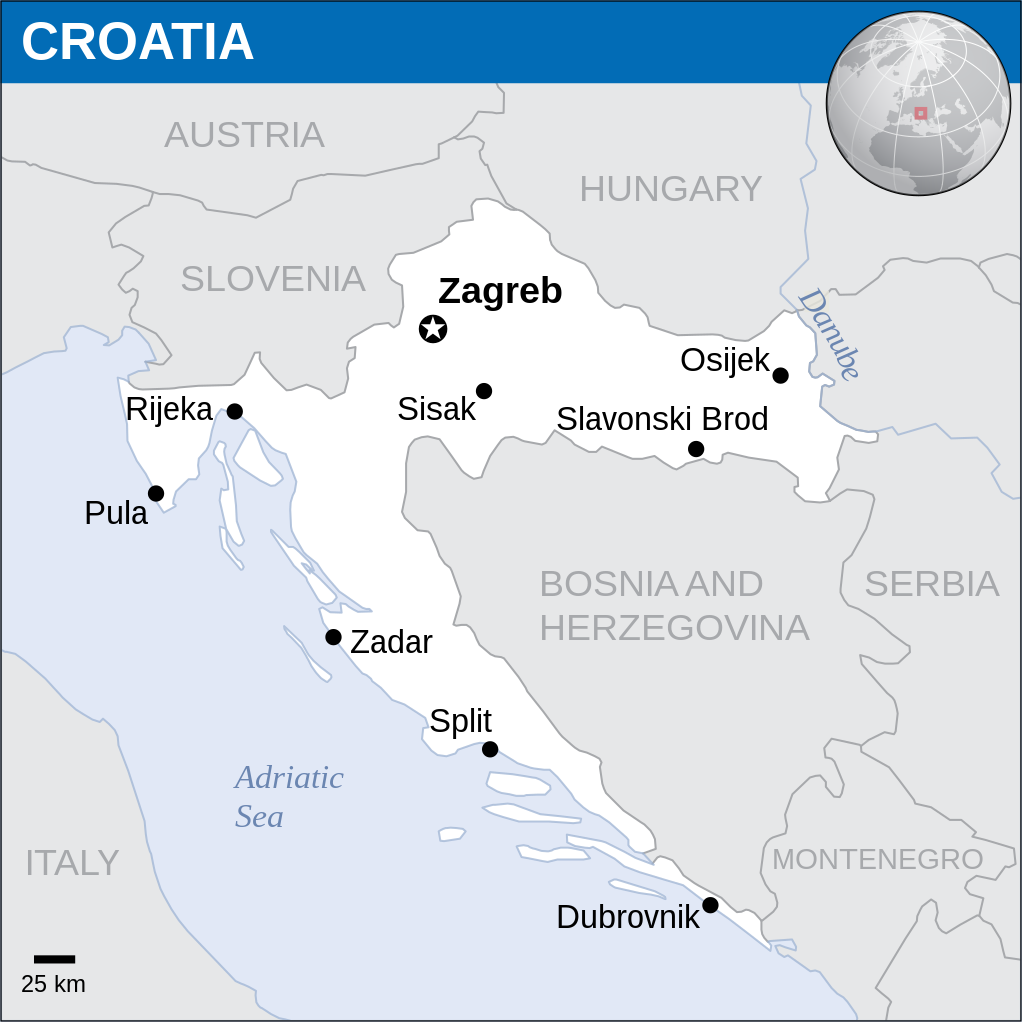
(For a description of Kraków and Zagreb, please see Canada Slim and the Author’s Apartment 1 – Learning.)
Split is a city in Central Dalmatia, Croatia, and the seat of the Split-Dalmatia county.
It is one of the Adriatic’s most vibrant cities – an exubrant and hectic place full of shouting stall owners and travellers on the move.

Above: Images of Split
At the heart of the city, hemmed in by sprawling estates and a modern harbour, lies the crumbling old town, which grew out of the former Palace of the Roman Emperor Diocletian (a palace/fort built for the retired Roman emperor Diocletian) where the locals sought refuge centuries ago.
The Palace remains the central ingredient in the city’s urban fabric – lived in continuously since Roman times, it has gradually been transformed into a warren of houses, tenements, churches and chapels by the various peoples who came to live here after Diocletian’s successors had departed.
Wandering the historic centre of Split you can still clearly see the Roman walls, squares, and temples.

Above: Diocletian’s Palace
Modern Split is a city of some 220,000 inhabitants, swolled by post-WWII economic migrants and post-1991 refugees – a chaotic sprawl of hastily planned Suburbs, where factories and highrise blocks jangle together out of an undergrowth of discarded building material.
As Croatia’s second city – (25% of Croatians live in the capital, Zagreb) – Split is a hotbed of regional pride and disparagement of Zagreb dwellers is a frequent component of local banter.
The city’s two big industries – shipbuilding and tourism – suffered immeasureably as a result of war and the economic slump which followed the collapse of communism.
As a result municipal belt-tightening has led to a decline in subsidies for the city’s traditionally rich cultural scene, but this is more than made up for by the vivacious outdoor life that takes over the streets in all but the coldest and wettest months.
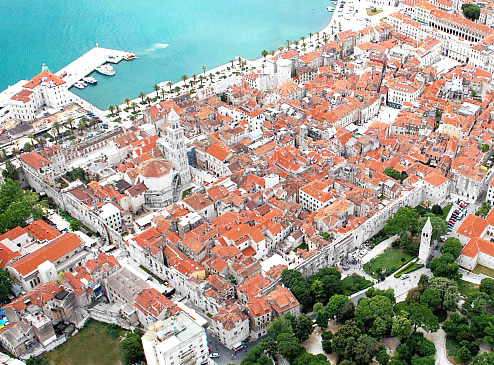
As long as the sun is shining, the swish cafés of the waterfront Riva are never short of custom.
Because of its ideal climate, with 2,800 hours of sunlight each year, local people have a few nicknames for Split:
- “The most beautiful city in the world“
- “Mediterranean flower“
Winters in Split are generally mild, with temperatures above 0°C, but despite the popular saying that the city experiences snowfall once every 30 years, there is actually at least one snowy day nearly every winter, usually in January or early February.
If you find yourself in Split on a day with significant snowfall, expect serious traffic disruption.
Many famous Croatian sports people were born in Split, so locals often nicknamed their city “The sportiest city in the world“.
The most popular sport institution is the football club Hajduk.
Large portions of the city are painted with the club’s colors and logo.
This is done by Torcida, the oldest supporters group in Europe, established in 1950.

- Watch football / soccer at HNK Hajduk Split, Stadion Poljud, Osmih mediteranskih igara.
- They play in Prva HNL, the top tier of football in Croatia:
- Indeed they’ve never been out of it and have won it several times.
- Their home ground of Poljud Stadium (capacity 34,000) is 1 km north of the main bus station, harbour and old city.
- Don’t go for the cheapest seats as these are in the north stand, the Torcida bastion of home fanatics.
- They play in Prva HNL, the top tier of football in Croatia:
Besides the bell tower of St. Duje (Domnius), the symbols of city are the Dalmatian dog and a donkey.

Above: Cathedral of St. Domnius
- Katedrala sv. Duje (St. Duje’s Cathedral).
- Built around 305 AD as a Mausoleum for Roman Emperor Diocletian it is the oldest cathedral building in the world.
- The cathedral is a very beautiful mixture of Roman temple and Catholic church.
- It also has a beautiful belltower which provides you a great panoramic view of Split, nearby islands and Marjan Hill.
- St. Duje’s bell tower.
- This beautiful bell tower also provides you a great panoramic view of Split, nearby islands and Marjan Hill.
- Jupiter temple (Cathedral’s baptistry).
- Ancient Roman temple which became St. John’s Church
- Climb the campanile bell tower next to the palace mausoleum.
- The stairs cling to the inside of the tower and in places the steps cross the large open window spaces.
- The ascent is certainly not for those with vertigo, but the views from the top are marvelous.
- It costs 10 kn to go up the bell tower.

Locals have a high regard for the donkey because of its past indispensable place in field work and transport across the Dalmatian mountains.

Nothing will ever damage the spirit of the indomitable Splicani themselves who remain famous for their self-depreciating humour, best exemplified by the writings of Miljenko Smoje (1923 – 1995), a native of the inner City district of Veli Varos.
Smoje’s books, written in Dalmatian dialect, document the lives of an imaginary group of local archetypes and brought the wit of the Splicani to a nationwide audience.
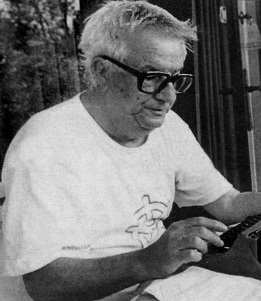
Above: Miljenko Smoje
An adaptation of his works, Nase male misto (Our Little Town), was the most popular comedy programme in Croatian – and probably Yugoslav – television history.
The city’s tradition of irreverence lived on in the weekly newspaper and national institution Feral Tribune, a mixture of investigative reporting and scathing political satire which was a thorn in the side of successive administrations.
Above: 1995 copy of the Feral Tribune (1984 – 2008)
As I have said, the historic centre of Split is built around the remains of the Roman palace.
- The historic core of Split with Diocletian palace is among the first urban complexes to enter the list of the UNESCO world heritage in year 1979.
- This one of a kind Imperial Palace was built from 298-305 AD and is one of the most significant original structures of the period mostly because so much of it has been preserved.
- Later this Palace contributed to the broadening of the town because as the city evolved beyond its walls.
- The unique substructure halls were newly explored and each year more of them are opened to the public.
- Fascinating artefacts on display.
You only need to wander around to experience it but you can also pay to visit the excavated remains of the basement of the palace.
The palace has well preserved main streets.
Roman palace is enriched with some gothic and reinassance buildings which makes a perfect match.
The palace has four monumental gates:
- Porta Aurea (Golden Gate)
- Porta Argenta (Silver Gate)
- Porta Ferrea (Iron Gate)
- Porta Aenea

Above: The Silver Gate
Diocletian’s palace is probably the best preserved Roman palace in the world.
- Peristylium (Peristil square).
- Main square of Diocletian’s palace with well preserved Roman architecture

- Two original Egyptian sphinxes
- One is located on Peristil square and the other in front of Jupiter’s temple or St. John’s church.
- They were brought from Egypt by Roman emperor Diocletian.
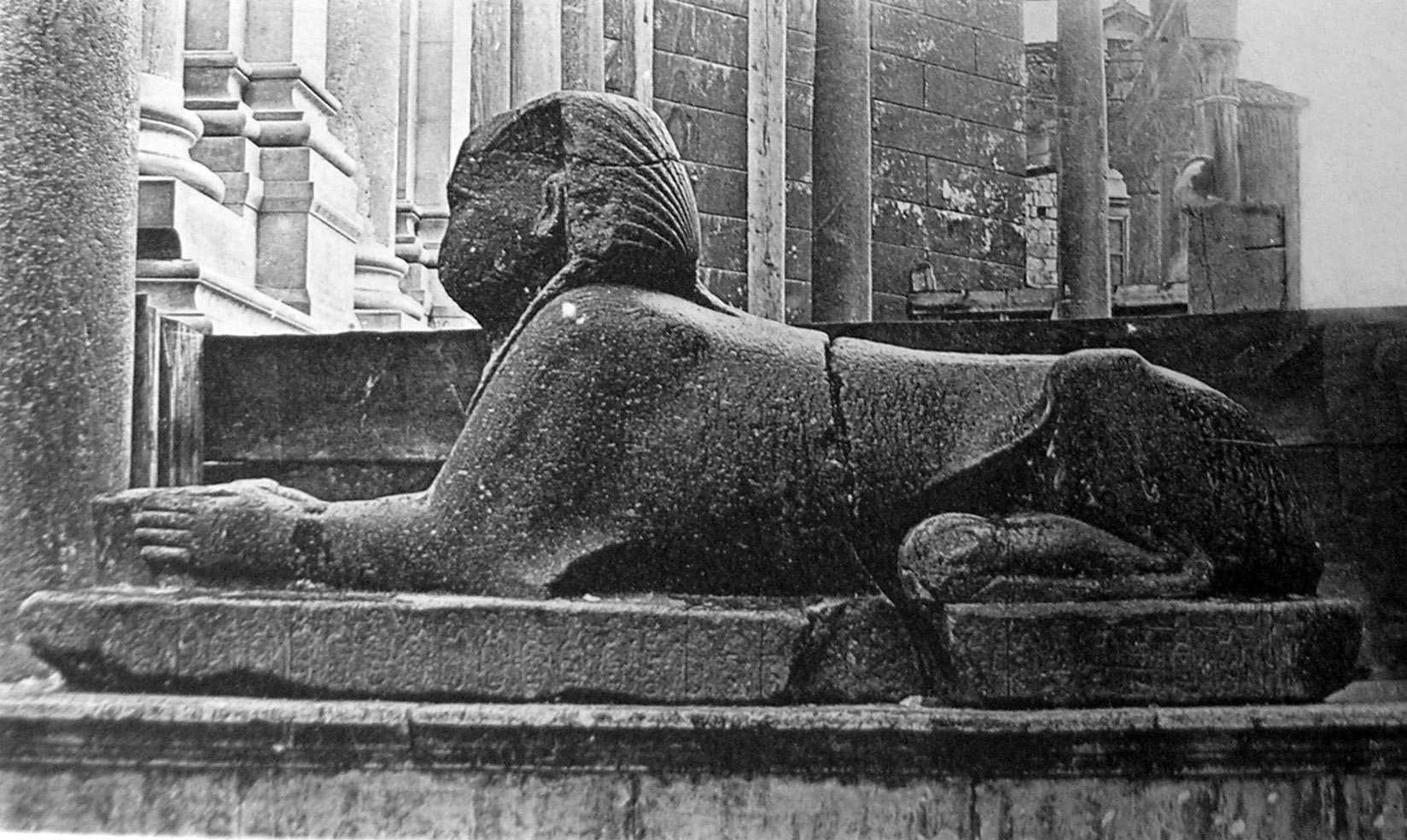
- Basement halls of Diocletian’s Palace
- Exceptionally well preserved substructure of Diocletian’s Palace now open as a museum.
- One of the locations in Game of Thrones.
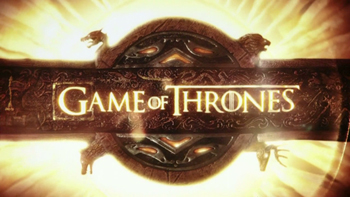
– Getski vrtal is the smallest park in Split, situated in the Diocletian’s palace at the Dominisova street.
During the summer the lanes and alleys here are full of clothes drying in the sunshine.
In every guidebook about Split are pictures from the Getski vrtal.
Riva is the main city promenade.
- Since 2007, Riva has a new, modern appearance, which isn’t up to the taste of some who used to its authentic look.
- Marjan – a hill situated on the west of Split, it is an oasis for many people who look for a natural stress relief, a great place for long walks, jogging, and bike rides.
- Marjan’s peak, Telegrin, is 174 m high and gives a wonderful panoramic view of Split.
- The south cliffs are popular within alpine climbers.
- St. Nicholas Church is situated on the east of Marjan.
- On its south side are the beautiful St. Jeronimus church and the “Gospe od Betlema” Church (Madonna of Bethlehem).
- House building is strictly forbidden in order to save Marjan – the lungs of Split.
- Veli Varoš – one of the oldest parts of town is the place where most of the city peasants and fishermen lived.
- Charming streets and beautiful small houses.
- Galerija Meštrović.
- The gallery contains works of Ivan Meštrović, a famous Croatian sculptor.

Above: Ivan Meštrović (1883 – 1962)
- Archaeological Museum.
- The oldest museum in Croatia (1820), about 20 min walk north of the old town (entry 20 kn).
- Many artifacts and monuments from Roman colonies Salona and Narona.
- Old graveyards
- Sustipan Memorial Park
-
- The old Jewish Cemetery
- Split city beach
- Continue south past the bus station, follow the road which goes by the tracks, and from the bridge over the tracks you can take a stairs down to the beach.
- If you have a longer stop-over in Split, 5 mins south of the passenger terminal and the train and bus stations lies Split’s city beach where you can take a plunge in the Adriatic.
- Sunbathe and swim on the beach at Bačvice.
- To reach this beach walk south along the waterfront from the bus station and then follow the road that crosses the railway line.
- There are many cafes and places to eat ice cream.
- This is certainly not the best beach in Croatia (it is packed solid most of summer), but it will give you a feeling of ‘real‘ Croatia as the vast majority of people who go there are from Split.
Above: Bacvice Beach
- Picigin, Bačvice.
- Traditional beach game with a small ball (Bačvice Beach).
- In summer every year there is a world championship of picigin.
- Green Market (Pazar).
- Split’s Pazar is the place to go for a variety of wares such as fruits and veggies, clothing and other odds and ends.
- Lots of local colour and excitement
- Grgur Ninski.
- It is said that if you touch the big toe of the statue and make a wish your wish will come true.
Andric and Cerina then went to Rijeka, where Čerina left Andrić without explanation, only saying he urgently needed to go to Italy.
Several days later, Andrić learned that Čerina was being sought by the police who had come to the offices of the paper where he had worked in Zagreb.

Above: Rijeka Harbour
Vladimir Cerina (1891 – 1932) had written for the Val and Vihor magazines, where he railed against Austria-Hungary and the Magyars.
He took part in organizing the assassination of Slavko Cuvaja.
At the end of WWI Cerina was disappointed with the accomplishment of Yugoslavia.
Mentally disturbed Cerina was placed into a mental hospital in Sibenik where he died.
He belongs to the rebellious and talented young Croatian writers who have been critical of Croatia’s political and social circumstances since the beginning of the 20th century.
Rijeka (“River“) is a city in Kvarner Bay, a northern inlet of the Adriatic Sea in Croatia.
It is the principal seaport of the country.
It had about 129,000 inhabitants in 2011, with the greater city area reaching up to 200,000, and is Croatia’s third largest city.
The city of Rijeka is a unique cosmopolitan city with a very turbulent history, especially during the 20th century.
For instance, Rijeka was ruled by eight different countries between 1918 and 1991, so theoretically, a citizen of Rijeka born in 1917 could have had eight different passports without ever leaving the city limits.
Such rapid changes of events led to a strong local identity for the city.
Rijeka is a major Croatian port, in the very heart of Kvarner Gulf.
Because of its location, Rijeka is a crossroads of land and sea routes, connected with the rest of the world by air, bus, train and ship lines.
Despite often being described as a predominantly industrial and port city, Rijeka is an interesting city with beautiful architecture of mostly secession style, a good choice of museums and quality night-life.
In the beginning of the 20th century, Rijeka was one of the main European ports and had weekly passenger service to and from New York.

The famous ship Carpathia, which saved most of the survivors from the Titanic, was heading from New York to Rijeka, and most of the crew on the ship was Croatian.
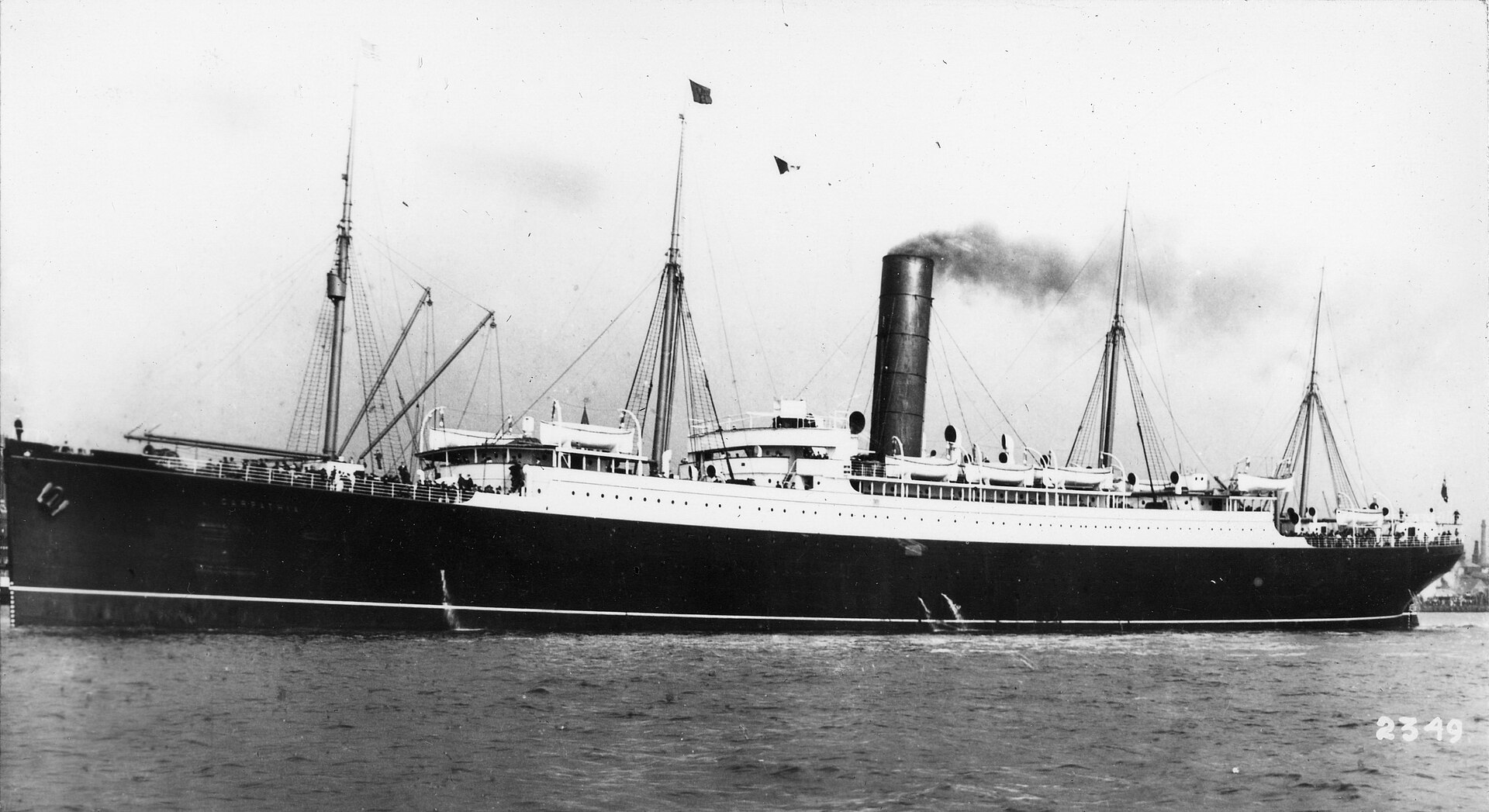
Above: The RMS Carpathia
Thanks to that, one of the lifeboats from the Titanic is preserved in the Rijeka Naval Museum.

Above: The RMS Titanic


Above: Untergang der Titanic, Willy Stöwer, 1912
Rijeka was also the first fascist state in the world before Mussolini’s Italy or Hitler’s German Reich.
A mixture of fascism, anarchism and elements of dadaism was the basis for the constitution of Reggenza Italiana del Carnaro (Italian Regency of Kvarner), a short-lived state created in 1919, after a coup d’etat of Italian war veterans led by Gabriele D’Annunzio, often called the pioneer of fascism.

Above: Flag of the Regency of Carnaro (1919 – 1920)
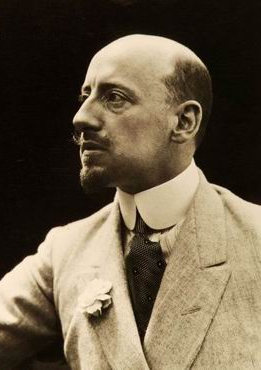
Above: Gabriele D’Annunzio (1863 – 1938)
(For more about Gabriele D’Annuzio, please see Canada Slim and the Shrine of Italian Victories of this blog.)
To make it more awkward, this unusual state was the first international state that recognized Lenin’s USSR.
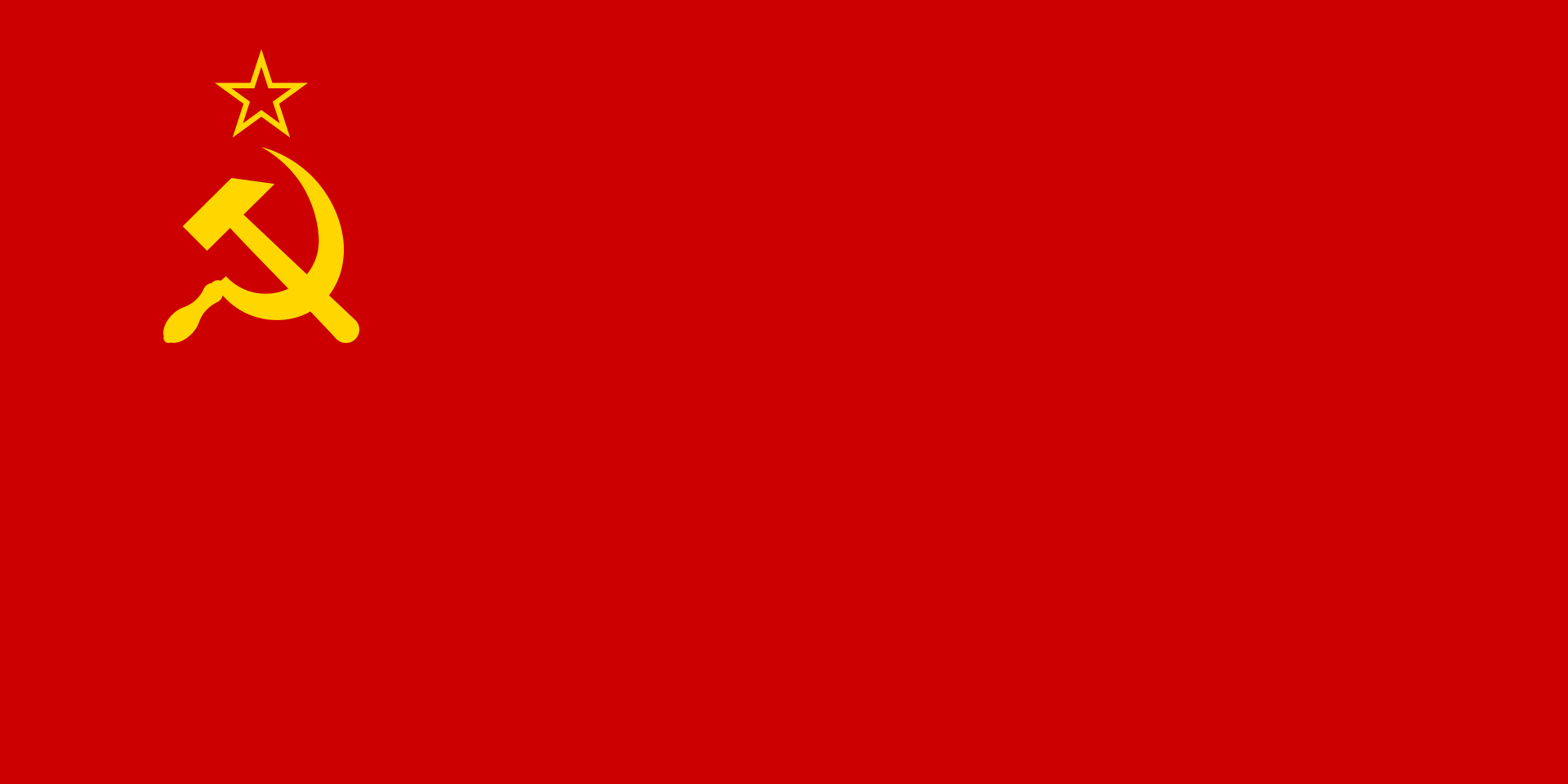
Above: Flag of the Soviet Union (USSR)(1922 – 1991)
(For more on Lenin and the Russian Revolution, please see Canada Slim and….
- the Zimmerwald Movement
- the Forces of Darkness
- the Apostle of Violence
- the Dawn of Revolution
- the Bloodstained Ground
- the Sealed Train
….of this blog.)
On the bright side, from 1920 to 1924, Rijeka was an independent neutral state, a status that provided Rijeka with independence and neutrality.
The official languages in the Free State of Fiume were Croatian, Italian and Hungarian, in order to provide maximum care for all minorities in the city.

Above: Flag of the Free State of Fiume (1920 – 1924)
Woodrow Wilson, President of United States, recommended Rijeka in 1919 as a headquarters of the League of Nations.

Above: Woodrow Wilson (1856 – 1924), 28th US President (1913 – 1921)

Above: Flag of the League of Nations (1920 – 1946)
After the Second World War, Rijeka was one of the candidates for hosting the headquarters of the United Nations.
The idea was to reintroduce the Independent State of Rijeka as a special United Nations neutral state.

Above: Flag of the United Nations
Rows of cumbrous cranes and rusty, sea-stained tankers front the soaring apartment blocks of this Croatia’s largest port.
Rijeka (pronounced ree-acre) is a down-to-earth industrial city, a major ferry terminal along the Adriatic coast and an unavoidable transit point if you are travelling through the region by bus.
Rijeka is far from beautiful, but it is the northern Adriatic’s only true metropolis with a reasonable number of attractions and an appealing urban buzz.

Modern Rijeka is actually made from two original cities that were separated by river Rječina.
On the west was Fiume or Rijeka and on the east Sušak, the rival counterpart of Rijeka mostly inhabited by Croatians and most of the 19th and early 20th century under Yugoslavian or Croatian administrative rule.
Those two cities were merged in 1945.
To symbolically connect the city, a wide pedestrian bridge was built in front of Hotel Kontinental which was turned into a square.

Most people are not aware that there is actually a river under this wide square.
It is a popular place for meeting and socializing, especially for the younger generations.
Coming to Rijeka, you are joining the list of people, together with Che Guevara, James Joyce, Franz Liszt, Dora Maar, Enrico Caruso, Benito Mussolini, Gabriele D’Annunzio, Josip Jelačić, Bobby Fischer, Saddam Husein, Gamal Abdel Nasser, Johnny Weissmueller, Pope John Paul II and many others, that have been in Rijeka before.
Rijeka will be a “European Capital of Culture” for 2020, an honour it shares with Galway.

The best way to see Rijeka’s cultural and historical monuments is to follow the tourist path that gathers all of the most important sights for this town and its history.
Most of them are accessible by foot, as they are mostly located in or near the city centre, but to see Trsat Castle you will need to take a short car/bus ride.
Other option, the more adventurous one, is to climb the 561 Trsat stairs that lead from city centre to Trsat.
Trsat Castle is worth the effort.
- Trsat Castle represents a strategically embossed gazebo on a hill 138 meters above sea level that dominates Rijeka.
- As a parochial centre it was mentioned for the first time in 1288.
- Trsat Castle is one of the oldest fortifications on the Croatian Coast, where the characteristics of the early medieval town construction have been preserved.
- Today Trsat Castle, beside the souvenir shop and the coffee shop, is enriched with new facilities – gallery space where art exhibitions are held as well as open-air summer concerts and theatre performances, fashion shows and literary evenings.
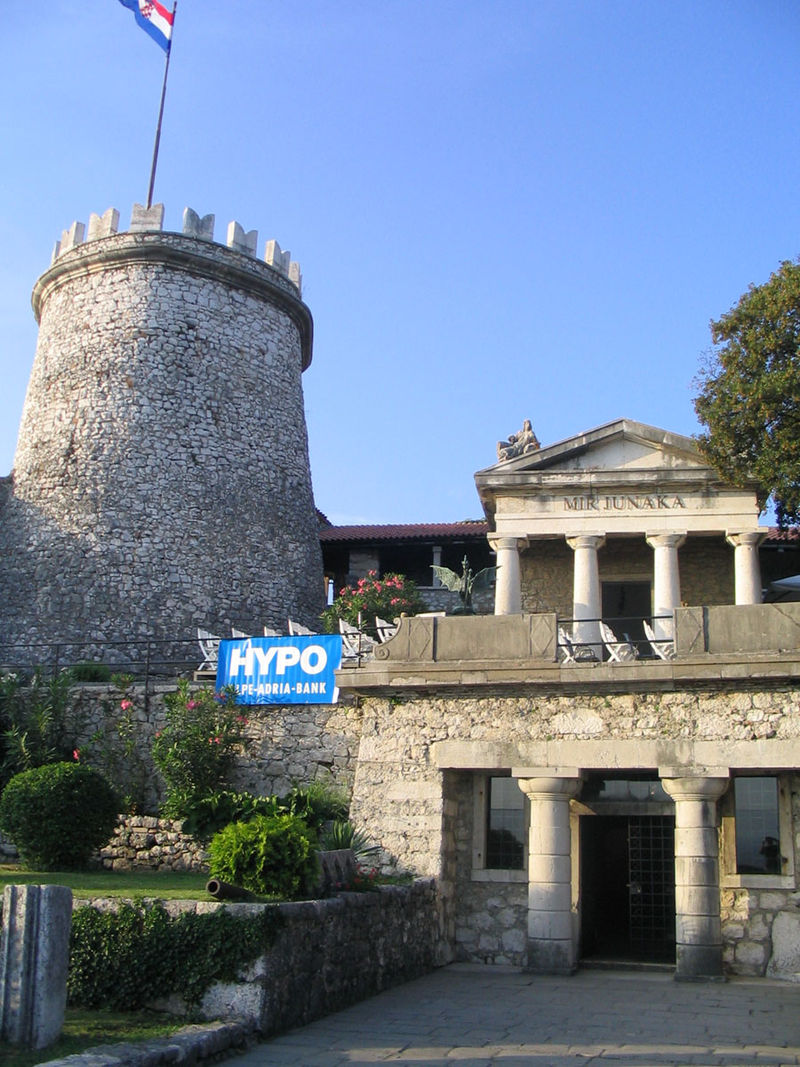
- City Tower (Gradski Toranj)
- A symbol of Rijeka and a good example of a typical round tower Access point, which leads into the fortified town.
- Today it dominates the central part of Korzo and is often used as a meeting place for local people.

- Our Lady of Trsat’s Sanctuary
- This is the largest centre of pilgrimage in western Croatia.
- It is famous for its numerous concessions and for the pilgrimages by numerous believers throughout the year, and especially on the Assumption of Mary holiday.

- Treasury and Gallery of Our Lady of Trsat’s Sanctuary
- The monastery treasury holds works of extraordinary esthetic and material value, paintings, reliquaries, lamps, chalices, ecclesiastical robes, while the Chapel of Votive Gifts houses gifts since the 19th century.
- Main city market – Placa
- No supermarket can replace the charm of the personal contact with the vendor or the excitement of the unpredictable purchase at the main city market.
- The harmonious compound of two pavilions and a fish market building where, in the morning hours, the real Rijeka can be experienced.
- Torpedo launching ramp
- The launching ramp from 1930s is an item belonging to the closed torpedo production factory.
- It is proof of the technical inventive of Rijeka during this period and at the same time is an important world landmark of industrial heritage.
Rijeka is a city with an unusual, turbulent past.
The best places to discover the whole story on Rijeka are its museums, among its rich collections and exhibitions.
- Maritime and Historical Museum of the Croatian Littoral
- Located in the beautiful Governor’s Palace building, it preserves a large part of Rijeka’s history and maritime tradition.
- Besides its continuous ethnographic exhibition, visit our collection of furniture and portraits of people from Rijeka’s public life.
- Natural History Museum
- Besides the botanical garden, the museum is a multimedia centre with an aquarium containing species from the Adriatic Sea.
- Besides fish, sharks and sea rays, the museum also conserves species of insects, reptiles, birds and amphibians.
- Ideal entertainment for both children and adults.
- Rijeka City Museum
- The museum includes eleven collections: fine arts, arts & crafts, numismatics, valuable objects, medals, arms from the Second World War and from the Croatian War of Independence, a collection of theatre and film material, philately, photography, press and technical collections.
- Modern and Contemporary Art Museum
- The museum collects works of art by Rijeka artists from 19th century and Croatian and foreign artists from 20th and 21st centuries.
- Peek & Poke – Museum of old computers.
-
- In this continuous exhibition over 1000 expositions are exhibited from around the world and from Croatian computer history.
- Located in an area of 300 m², in the centre of Rijeka, it is the largest exhibition of its kind in this part of Europe.
-
- The St. Vitus Cathedral Sacral Collection
- The collection is located in an attractive location, in a gallery above the internal part and above the church’s altar, whilst the thesaurus is located in the atrium of the cathedral’s locale.
- The sacral “Jesuits’ heritage” collection includes some very rare exponents.
- Memorial Library and the Mažuranić-Brlić-Ružić Collection
- The library and Mažuranić-Brlić-Ružić collection are at Pećine, in Rijeka, inside the villa of the famous Rijeka’s family, Ružić.
- Permanent Glagolitic Alphabet Exhibition
- A permanent exhibition has been collocated in the Rijeka University Library known as “Glagoljica” in which the Glagolitic written and printed heritage has been presented, especially that of the north Adriatic area where the first Croatian (Glagolitic) books were printed.
- Petar Kružić staircase
The stairway starts from the archway on the eastern bank of the Rjecina River in Rijeka and leads up to Trsat settlement, on a plateau with an altitude of 138 meters from sea level.
The stairway consists 561 stone steps and was built for the pilgrims as the road to the Church of Our Lady of Trsat (Church of Our Lady of Trsat).
The construction of the votive stairway was begun in 1531. due to the Croatian warlord captain (Petar Kružić), who excelled in the battles with the Turks.
Petar Kružić built the lower part of the staircase way leading to the Basilica of Notre-Dame of Trsat, today is Church of Our Lady of Trsat dated 15th century.
It is why this staircase was named the Petar Kružić Stairway.
Later the stairway was extended up to 561 steps.
One of the votive chapels along this stairway was created in 15th century and another one in 18th century.
The porch at the foot of the stairway leading to Trsat has a statue of “Virgin with Child” dating from 1745.
There is a legend about the Trsat stairway.
It says that the Franciscans made a deal with the Devil:
If he makes a stairway, he will have a soul who climbs the stairway first.
After some deliberation, the Devil accepted.
Once he finished the work, the Devil waited for the victim.
However, the Franciscans let a goat climb the stairway.
The Devil was so enraged that he mixed the steps, so that nobody had been able to count them to this day.
The legend is based on the fact that the stairway was extended on several occasions.
When it was first built in 1531 by Petar Kružić, the captain of the Uskoks, there were about a hundred steps.
Today, their number exceeds 500.
The beginning of the steep ascent as votive repositories of dignitaries.
A unique experience is to climb the Trsat steps in the procession on the Feast of the Assumption.
Even today, some pilgrims practise the ancient votive tradition of climbing the steps on their knees.

By the time war was declared, Andrić had returned to Split feeling exhausted and ill.
Given that most of his friends had already been arrested for nationalist activities, he was certain the same fate would befall him as the police took an obvious interest in his movements
Despite not being involved in the assassination plot, on 29 July 1914, Andrić was arrested for “anti-state activities” and imprisoned.
He was subsequently transferred to a prison in Šibenik and then, with some 350 others, to Rijeka.
Many of the others were taken on to Pest, while another group, including Andric, arrived on 19 August in Maribor (Marburg) Prison, in what is now Slovenia.
Above: Sibenik Prison
Šibenik is a city (pop. 37,000) in Šibenik-Knin County, in northern Dalmatia, Croatia.
It is one of the few towns on the Adriatic not to have a Greco-Roman heritage.
It is not a resort and there is little point in stopping if you are looking for somewhere quiet with a beach, though the mazelike medieval centre is good for idle walking.
A trademark of the city is the traditional Šibenik hat, coloured orange and black, also the city’s colours.
Sixteenth century polymath and bishop Faust Vrančić (1515 – 1617), known as one of the inventors of the parachute and perhaps the first man who used it, was born here and lived here.
Above: Portrait of Faust Vrancic

Šibenik was mentioned for the first time under its present name in 1066 in a charter of the Croatian King Petar Krešimir IV (reigned 1058 – 1075).
For a period of time, it was a seat of the Croatian King.
For that reason, Šibenik is also called “Krešimirov grad” (Krešimir’s city).

It is the oldest native Croatian town on the eastern shores of the Adriatic sea.
You can see the statue of King Petar Krešimir IV between the park and the beginning of the promenade along the sea.
Šibenik was for almost 300 years under Venetian rule and then Austro-Hungary, Yugoslavia and Croatia.
It was a very important town during the Venetian-Turkish wars and it was a frontier of Western civilization and Christianity.
Venetian rule left Šibenik with four beautiful fortresses: St. Michael, St. John, Šubićaevac and St. Nicholas.
The old part of the town is full of churches, old noblemen palaces and typical Dalmatian stone houses centuries old is very interesting.
The town walls are also well preserved.
One of the most interesting sights is the medieval monastery garden.
-
- Katedrala sv. Jakova (Cathedral of St. James or Cathedral of St. Jacob)
- This basilica is considered as one of the major attraction in the city.
- It is on the UNESCO World Heritage list.
- Construction started in 1431 and it was not finished until 1536 due to Turkish wars.
- Several successive architects built it completely in stone in the 15th and 16th centuries, both in Gothic and in Renaissance style.
- The interlocking stone slabs of the Cathedral’s roof were damaged when the city was shelled by Serbian forces in 1991.
- The damage has since been repaired.
- It has a beautiful baptistery worth seeing it, and the curiosity is it has been built with stone only, without any kind of binder.
- Another one is 72 human heads carved in stone on the external part which belong to unknown individuals, passers-by, sailors, merchants and peasants who posed as the cathedral was being built.
- Statues of Adam and Eve are also curious:
- Adam is covering his chest, but Eve is not covering hers, but rather her stomach.
- Katedrala sv. Jakova (Cathedral of St. James or Cathedral of St. Jacob)
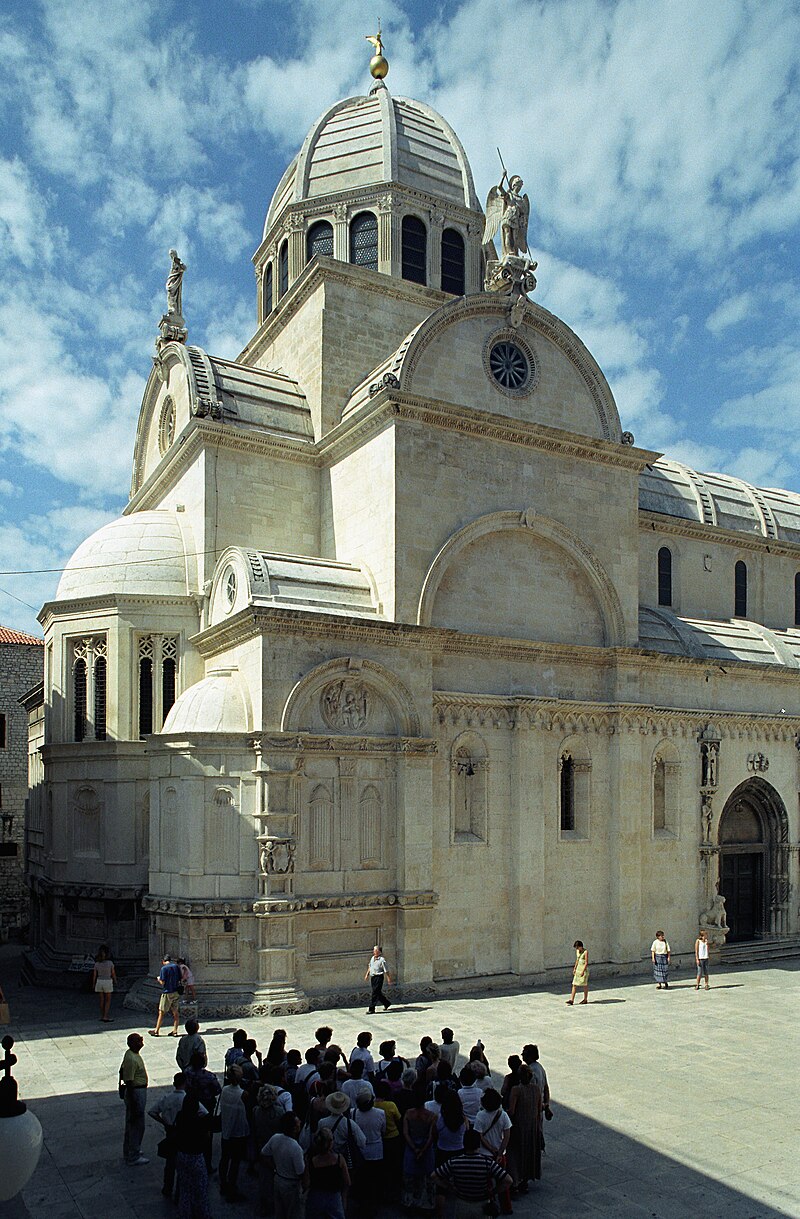
- Gradska vijecnica (Old City Hall)
- Crkva sv. Barbare (Church of Saint Barbara).
- A beautiful small church dating from the 15th century with an asymmetric facade with a clock.
- Now it houses the Muzej crkvene umjetnosti (Museum of Church Art).

- Biskupska palača (Bishops Palace) (1439-1441)
- Kneževa palača (Dukes Palace)

- Četiri bunara (four draw-wells)
- It is an underground complex of water reservoirs, built in the 15th century for city’s water supply.
- Now it’s a multimedia exhibition center Bunari – Tajne Šibenika (“Bunari – Secrets of Sibenik“).
- The reservoirs are now dry and decorated as a museum/gallery and a café.
- It has seven sections: Šibenik’s treasure, food and drink, shipwrecks around Šibenik, persons from the past.
- Concerts and stand-up comedy shows often take place at the café.
- Crkva i smostan sv. Frane
- Church and monastery of St. Francis dating from the 16th century.
- Perivoj Roberta Visianija (Park of Roberto de Visiani).
- A nicely decorated little park with fountains dedicated to Roberto de Visiani (1800 – 1878) – botanist, poet and philosopher who was born in Šibenik.

- Srednjovjekovni vrt sv. Lovre (Medieval garden of the monastery St. Laurence)
- Extremely rare medieval monastery garden, restored in 2007 by Dragutin Kiš, who won a Millenium Flora Award in Japan in 2000.
- It contains various plants, especially those used in pharmacies and as spices.
- It has a quiet café, where you can quietly enjoy the view to the Šibenik’s old part and the sea, the atmosphere and the aromas.
- Tvrđava sv. Mihovila (St. Michael’s Fortress)
- Ruins of the 13th century now converted into a summer stage.
- It’s an empty shell inside, but the views over the surrounding city and the bay are quite promising.
In Maribor, the prisoners were 8 to 10 to a room.
Andric and his fellows quickly organized their time in reading, discussion and learning foreign languages.
“We have founded a proper little university.“, Andric wrote to his friend Evgenija Gojmeric in Janaury 1915.
Nevertheless, despite the craftfully cheerful tones of his letters of this time, Andric’s health was rapidly deteriorating.
“I am a bit weak, but I am protecting the little health I have and I hope that I shall be able to hold out insave my mother’s only child.”
(January 1915)
“Sometimes I become impatient, but I force myself to be calm and sit down, God knows how often, at the table: all neutral nouns, etc.
Believe me, grammars are the only books I can read calmly, for everything else reminds me of the past or the present, and I don’t want that.”
(March 1915)
Above: Maribor Prison
Maribor is the second most important centre and the second largest city of Slovenia.
It has about 114,000 inhabitants who live embraced in its wine growing hills and the Mariborsko Pohorje mountain.
Maribor is near the Slovenian border with Austria, beside the Drava River and at the centre of five natural geographic regions.
It is the capital of Štajerska, the Slovenian Styria.
Maribor was first mentioned in the 12th century.
Though the city had been attacked by the Turks several times, it was constantly under the rule of the Austrian Habsburgs until the end of the World War I.
After the war was over the city was claimed by both the Austrians and by the new state of Yugoslavia.
Finally it fell to Yugoslavia.
It was occupied by the Germans during World War II, but became part of Yugoslavia again after the War was over.
In 1975 the University of Maribor was founded and this has helped the city to become more and more an attractive, vibrant student city.
After Slovenia declared independence, back in 1991, the city suffered from the economic consequences.

Above: Flag of Maribor
Today, Maribor is a transregional financial, educational, trade and cultural centre.
And since it is pleasantly small and lodged in the nature of Pohorje Mountain on the one side, the wine growing hills on the other, and with the river Drava wending its way through it, Maribor has grown into one of the country’s most important tourist destinations.
Its key features are:
- the rich wine culture (the oldest vine in the world, numerous wine roads and wine cellars)
- the old town’s cultural offerings (theatre, traditional events, galleries and museums)
- recreational activities (hiking, cycling and skiing).
Maribor sits among the Pohorje Mountain, the Slovenske gorice Hills and the Kozjak Hills on the gravel terrace of the Drava Valley.
The river Drava divides the city on the so-called left (north) and the right (south) bank.
The city’s old town core is on the left bank of the river Drava.
On the north, Maribor is embraced with the town (wine-growing) hills, and on the southwestern part of the city, the foothills of the Pohorje Mountain start to rise.
A good first stop in the city is Infopeka, an information center which gives out free advice, free Internet usage and free rent-a-bicycle.
They can be found across the old bridge from the Glavni Trg, on the right side of the street.
Sights to see:
- Old Vine (Stara trta).
- Guinness Book-certified oldest vine in the world (about 450 years old) growing on the front of the Old Vine House in Lent, the oldest part of the town on the embankment of the Drava river.
- Maribor’s Old Vine is given a lot of tourist promotional protocol events
- the most famous and most popular is certainly the Vine’s Grape Harvest – the highlight of the traditional Old Vine Festival (Festival Stare trte) held annually at the end of September.
- The Old Vine House (Hiša Stare trte).
- A temple of wine tradition and culture, selling point of souvenirs from the Maribor-Pohorje destination and a tourist information centre, an exhibition room with guided tours, a place for wine tasting, an event room, and the honorary seat of Slovene and international associations, sworn to honouring wine and the wine culture.

- Vinag Wine Cellar (Vinagova vinska klet)
- In the centre of the city with 20,000 m² surface and 2 km length, it has 5.5 millions litres of excellent wine
- Slomškov Square (Slomškov trg)
- One of the most charming squares in the city can be found in the western part of the old town core.
-
- In the square stand the Cathedral (Stolnica) and a statue of Bishop Anton Martin Slomšek (1800 – 1862).
Above: Bishop Anton Martin Slomsek
(Blessed Anton Martin Slomšek was a Slovene Roman Catholic prelate who served as the Bishop of Lavant from 1846 until his death.
He served also as an author and poet as well as a staunch advocate of the nation’s culture.
He served in various parishes as a simple priest prior to his becoming a bishop in which his patriotic activism increased to a higher degree since he advocated writing and the need for education.
He penned textbooks for schools including those that he himself opened and he was a vocal supporter of ecumenism and led efforts to achieve greater dialogue with other faiths with an emphasis on the Eastern Orthodox Church.
His beatification had its origins in the 1930s, when petitions were lodged for a formal cause to commence.
This all culminated on 19 September 1999, when Pope John Paul II presided over the late bishop’s beatification in Maribor.)
- Main square (Glavni trg)
- Includes:
- the Town Hall (Mestna hiša Rotovž)
- Includes:

-
-
- the Plague Column (Kužno znamenje)
-

-
-
- the Aloysius church (Alojzijeva cerkev)
-
-
- The main square is the largest of Maribor’s squares and it is one of the most important one in the city centre with historical sights and the hustle and bustle of town life flow.
- Here you can look at the important sights of the old town core.
- Sip coffee and sit out in the sunshine.
- Visit some of the small shops.
- You can find it in the immediate vicinity of the Old Bridge and the street Koroška cesta.
- Maribor Synagogue (Sinagoga Maribor).
- Built in 14th century, it is the second oldest in Europe (at Židovska ulica 4).
- Today, it serves as a centre for cultural activities and it offers visitors various events including exhibitions, concerts, literary evenings and round tables.
- The Synagogue is in the Jewish square (Židovski trg) in the former Jewish quarter, which is situated near the Main square (Glavni trg).
- Water tower (Vodni stolp).
- One of defence towers built in the 16th century by inhabitants on account of the constant fear of Turkish raids.
- This mighty Renaissance town fortification can be seen close by the river Drava at Lent.
- The street Usnjarska ulica, one of the oldest streets in the town, will lead you past it.

- Maribor castle (Mariborski grad).
- Built by Emperor Frederick III in the 15th century to fortify the northwestern part of the town wall.
- The castle is located right in the centre of Maribor, surrounded by the Castle square (Grajski trg) and the Trg svobode square (Trg svobode).
- In the castle, you can visit the Maribor Regional Museum.

Plagued by tuberculosis, Andrić passed the time reading, talking to his cellmates and learning languages.
By the following year, the case against Andrić was dropped due to lack of evidence, and he was released from prison on 20 March 1915.

The authorities exiled him to the village of Ovčarevo, near Travnik, Bosnia, where he remained for two years until the Amnesty.
He arrived there on 22 March and was placed under the supervision of local Franciscan friars.
Andrić soon befriended the friar Alojzije Perčinlić and began researching the history of Bosnia’s Catholic and Orthodox Christian communities under Ottoman rule.
Andrić lived in the parish headquarters and the Franciscans gave him access to the Gura Gora Monastery chronicles.
In return, he assisted the parish priest and taught religious songs to pupils at the monastery school.

Above: Ovcarevo Monastery, Travnik
Andrić’s mother soon came to visit him and offered to serve as the parish priest’s housekeeper.
“Mother is very happy.”, Andrić wrote.
“It has been three whole years since she saw me.
And she can’t grasp all that has happened to me in that time nor the whole of my crazy, cursed existence.
She cries, kisses me and laughs in turn.
Like a mother.“
It was a world rapidly disappearing, but one to which Andric was to return to often in his visits to Bosnia throughout his life.
(For a description of the Travnik region, please see Canada Slim and the Author’s Apartment 1 – Learning of this blog.)
After the companionship of the prison in Maribor, Andric’s letters from Bosnia in this period express a deep sense of isolation and despondency.
His experience of exile in the wild mountains in the heart of Bosnia certainly coloured the atmosphere of the novel Bosnian Story, set in Travnik, describing the exile and isolation of the small diplomatic community there in the early 19th century.
Andrić was later transferred to a prison in Zenica.
Zenica prison (Kazneno-popravni zavod zatvorenog tipa Zenica, KPZ Zenica, K.P. DOM) is a closed-type prison located in Zenica, Bosnia and Herzegovina.
It was opened in 1886.
It was the largest prison in Yugoslavia during its existence and is currently the largest prison in Bosnia and Herzegovina.
As of 2016, the prison had a capacity of 813 inmates.
Zenica is an industrial city (the fourth largest, after Sarajevo, Banja Luka and Tuzla) in Bosnia and Herzegovina and the capital of the Zenica-Doboj Canton of the Federation of Bosnia and Herzegovina entity.
It is located about 70 km north of Sarajevo and is situated on the Bosna river, surrounded by mountains and hills.
The modern city is dominated by the Zenica Steelworks and the air can be toxic, making it difficult to walk around.
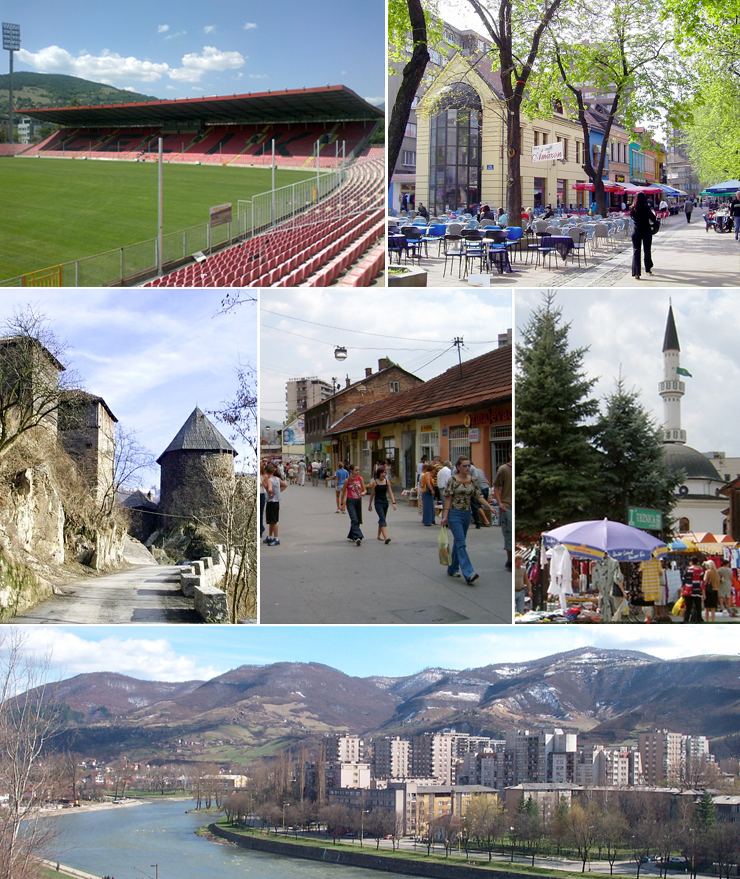
Above: Images of Zenica
The town’s Stara čaršija (old quarter) contains several attractions, including a synagogue, which used to be the City Museum and Art Gallery.
Above: Zenica Synagogue
There is also a mosque (Čaršijska mosque), an Austrian fountain and an old Bey’s farmhouse (Hadžimazića House).
Above: Zenica Mosque
Above: Hadzimazica House
Fatih Sultan Mehmed Barracks of the Turkish Armed Forces was also based in Zenica within the peacekeeping activities of European forces in the country.
Above: Fatih Sultan Mehmed Barracks of the Turkish Armed Forces, Zenica
There are many things to do in Zenica.
A lot of people just enjoy walking around the city and shopping.
But there are also places where you can hike and enjoy beautiful views.
Also, there are beautiful mountains around Zenica.
One of the most visited is Mount Smetovi.
It is very attractive in all seasons.
In summer there are beautiful meadows and forest and marked mountaineer trails through forests.
In winter it is attractive for skiing and snowboarding.
Above: Mount Smetovi Monument
On 2 July 1917, Emperor Charles declared a general amnesty for all of Austria-Hungary’s political prisoners.
His freedom of movement restored, Andrić visited Višegrad and reunited with several of his school friends.
He remained in Višegrad until late July, when he was mobilized.

Above: Images of Visegrad
(For a description of Visegrad, please see Canada Slim and the Author’s Apartment 1 – Learning.)
Because of his poor health, Andrić was admitted to a Sarajevo hospital and thus avoided service.

Above: Panorama of Sarajevo
(For a description of Sarajevo, please see Canada Slim and the Author’s Apartment 1 – Learning.)
He was then transferred to the Reservospital in Zenica, where he received treatment for several months before continuing to Zagreb.
There, Andrić again fell seriously ill and sought treatment at the Sisters of Mercy hospital, which had become a gathering place for dissidents and former political prisoners.
Above: Sisters of Mercy Hospital, Zagreb
(For a description of Zagreb, please see Canada Slim and the Author’s Apartment 1 – Learning.)
In the company of several like-minded young men and writers, including the renowned playwright Ivo Vojnovic (1857 – 1929) from Dubrovnik, Andric entered fully into the intellectual life of the time.

Above: Ivo Vojnovic
In January 1918, Andrić joined several South Slav nationalists in editing a short-lived pan-Yugoslav periodical called Književni jug (Literary South), the first literary magazine of an expressively Yugoslav orientation.
Here and in other periodicals, Andrić published book reviews, plays, verse, and translations of Walt Whitman (Leaves of Grass) and August Strindberg (The Red Room), and the first fragement of the story “Derzelez at the Inn“.

Above: Walt Whitman (1819 – 1892)

Above: August Strindberg (1849 – 1912)
Over the course of several months in early 1918, Andrić’s health began to deteriorate.
Suffering from lingering pnuemonia, his friends believed Andric was nearing death.
He was described by several contemporaries as being exceptionally thin and pale, with all the signs of impending death.
Medical treatment alternated with intensive literary and editorial work.
He published literary critiques and reviews, essays, articles and translations.

Above: Zagreb
“Looking at a human settlement on a damp and steep incline, surrounded by a rickety fence, I began to think about the purpose of this world.
Indeed, this planet could merely be a pigsty into which everything that ever lived and crawled in the universe was forced, with the sole purpose of dying here.
In large hospitals, there is a room where the patients who obviously have but a few hours to live are transferred.
In the universe, our Earth is this dying chamber.
And the fact that we reproduce is merely an illusion, for everything is happening with the confines of death, to which we are condemned and because of which we have been cast upon Earth.
The fact of the matter is, measured by a universal yardstick and expressed in our human language:
We came into the world yesterday and tomorrow we will be gone.
The grass might still grow and the minerals mature, but only for their own benefit, not ours.”
(Ivo Andric, Signs by the Roadside)

Andric recovered and spent the spring of 1918 in Krapina writing Ex ponto.
It was his first book.
Towards the end of the summer it was published.
Ex Ponto is a work of experiencing body and mind disempowerment, a dark image of human isolation and loneliness.
The entire book is based on melancholy, solitude and separation from others – the main feelings that permeate the whole work.
In Ex Ponto, Ivo Andrić paints his story with feelings of melancholy and loneliness, one of the dominant characteristics and characteristics of Andić’s works.
The title of the work Ex Ponto Ivo Andrić takes from the collection of poems “Epistulae ex Ponto” of the Latin poet Ovid, who speaks about his suffering and exile on the Black Sea coast (where he was sent by Caesar Augustus).

Above: Statue of Publius Ovidius Naso (43 BC – 18 AD), Constanta, Romania
This collection of lyric prose tells of the days of Andrić’s time spent in prison and in exile.
Fatigue, loneliness, separation from others are the main feelings that occur throughout the work.
Andrić did not want to give any description of his darkening and coming to such a place.
Confident in his power, the poet tries to rise above the evil that has befallen him.
He tries to deprive himself of the sense of need for happiness and to view it as a generality.
He speaks to all those who will live in abundance and joy until he is as silent as the foundation stone.
He dreams of one absolute kindness, without boundaries, and does not despair of hope.
Ex Ponto is expressed in the form of addressing the reader with the impression that he wants to start a dialogue with him.
We try to understand and find the connection between his love and faith.
Ex Ponto is accompanied by motives of loneliness, anxiety, melancholy.
The captivity of his thoughts and the loneliness of solitude accompany him, both at the beginning and throughout the darkness, but also later in life.
The banished stay in a prison cell leaves one with an indelible feeling of restlessness and loneliness.
He remembers his mother, her warm bread and her room.
He is deeply sorry that his mother is suffering.
He looks through the bars of the seasons and accordingly the emotions come.
Time is gloomy, gentle, optimistic.
He thinks of women as a luxury, a cause for dreams, singing, sighs, ecstasy and longing.
The female leitmotif is present in all his works.

Embarrassed by solitude, Andric understands the truths of life and the meaning of the fight that illuminates his dark days.
Ex Ponto abounds in the truths of life that Ivo Andrić came to us and which he communicates to us, from which we learn and live.
The very point of the piece is in the epilogue when a young man, disappointed with life, still chooses to live, because life is once and lasts a very short time.
As with many of his other works, Ivo Andrić Ex Ponto quotes have been used very often when attempting to explain the significance and inevitability of the losses a person faces during life, which must be reconciled because we cannot prevent them.
Now I see.
Losing is terrible only until everything is lost, because losing a little brings sorrow and tears.
And as long as we can gauge the size of the loss on the rest, it is difficult for us.
But once we lose everything, then we feel an ease for which there is no name, because that is the ease of too much pain.
It’s weird how little we need to be happy and even more weird is how often we miss it so much.
The more you hear and feel about yourself, the shallower and crazier your neighbor’s conversation becomes.
And what I look at is all song and whatever I touch is all pain.
Live and fight as best you can, pray to God and love all nature, but leave the most love, attention, and compassion for the people, your poor brethren, whose life is a steady beam of light between the two infinities.
Love people, help them often and always want them, because we all need people.
Ex Ponto ends rather optimistically, explaining to us that to live means to live illusion to illusion, deception to deception.
Although life is hard, everyone is committed to living it.
Krapina is a city in Central Croatia.
Krapina is a small town in northern Croatia and also an administrative and cultural centre of Krapinsko-Zagorska County, located approximately 55 km from Zagreb, Croatia’s capital.
Krapina is very tiny town so you can see all the sights on foot.

Above: Krapina, Croatia
Krapina Neanderthal Museum (Muzej Krapinskih Neandertalaca)
This is where you enter a time machine and go far back into the past to Earth’s prehistory.
Here you can find out all about the anatomy, culture and the environment of the Neanderthal.
The museum is located on the prehistoric habitat.
The museum has all sorts of multimedia content so it is a great place to visit with your family.
World War I (often abbreviated as WWI or WW1), also known as the First World War, the Great War, the Seminal Catastrophe, and initially in North America as the European War, was a global war originating in Europe that lasted from 28 July 1914 to 11 November 1918.
Contemporaneously described as “the war to end all wars“, it led to the mobilisation of more than 70 million military personnel, including 60 million Europeans, making it one of the largest wars in history.
It was also one of the deadliest conflicts in history, with an estimated nine million combatants and seven million civilian deaths as a direct result of the war, while resulting genocides and the resulting 1918 influenza pandemic caused another 50 to 100 million deaths worldwide.

Above: Images of World War One
The end of World War I saw the disintegration of Austria-Hungary, which was replaced by a newly established South Slav state, the Kingdom of Serbs, Croats and Slovenes (renamed Yugoslavia in 1929).

The first weeks after the end of the War were intoxicating for the peoples of the newly formed Kingdom of Serbs, Croats and Slovenes.
In the words of Ivo Vojnovic:
“We look at one another and ask:
Is it true?
Is this really happening to us?”
Nevertheless, it did not take long for Andric and Vojnovic to realize that the organization of the new state had simply replaced the old one, more or less unchanged.
They were deeply disappointed, but resolved to carry out their duty to their fellow countrymen as conscientiously and seriously as they could.

Above: Flag of the Kingdom
In November 1918, Andric published an article in the Zagreb paper The News entitled “Let the intruders remain silent“:
“The idea of national unity is the legacy of our finest generations and the first of heavy sacrifice.
This unity, the dream of our life and the meaning of our struggles and suffering, must not, now that it is largely realized, be allowed to fall into the hands of intruders, to be tainted by the marks of their unclean fingers and treated with their toothless sophisms.
And all of us who bore this idea of unity unsullied with fraternal battles and did not deny it before the slanderous Austrian judges, we shall be able to defend it also from unscrupulous journalists and sullen self-styled politicians.”
In late 1918, Andrić re-enrolled at the University of Zagreb and resumed his studies.
In the immediate aftermath of the war, Andrić’s tendency to identify with Serbdom became increasingly apparent.

Above: Logo of the University of Zagreb
In December 1918, Ivo Vojnovic wrote to his brother:
“I am sending you Ex Porto which has created a great sensation.
The writer is a young Catholic, a perfect young man.
A Serb from Bosnia, where he contracted tuberculosis.
He is here now, running The Literary South, my constant companion, one of the best and most refined souls I have ever met.
This work of his will become “Das Gemeingut” (common heritage) of all peoples when it is translated.
C’est un grand poète et une âme exquise.”
(He is a great poet and an exquisite soul.)
By January 1919, he fell ill again and was back in the hospital.
Fellow writer Ivo Vojnović became worried for his friend’s life and appealed to Andrić’s old schoolteacher Tugomir Alaupović (who had just been appointed the new Kingdom’s Minister of Religious Affairs) to use his connections and help Andrić pay for treatment abroad.
Above: Tugomir Alaupović (1870 – 1958)
Eventually, Andrić chose to seek treatment in Split, where he stayed for the following six months on the nearby island of Brac.
During his time on the Mediterranean coast, Andrić completed a second volume of prose poetry, titled Nemiri (Anxieties), which was published the following year.
“You have been silent for a long time and have been silent for a long time, my son, you are enveloped in dreams, weary of the ways of the spirit.
Your face is bent and your face is pale, deep down with your eyelids and your voice like the squeak of a dungeon door.
Get out on a summer day, my son!
What did you see on a summer day, my son?
I saw that the earth is strong and the sky eternal, and man weak and short-lived.
What did you see, my son, on a summer day?
I saw that love is short and hunger is eternal.
What did you see, my son, on a summer day?
I have seen that this life is a painful thing, consisting of the wrong change of sin and unhappiness, that to live means to lie from one to another.
You want to sleep, my son?
No, father, I’m going to live.”
“Oh God, why did you give me a heart that constantly pulls me to the distance and beauty of unseen places?Why did you always make my fortune stay where I am gone?”“I often sit for hours and watch the cool autumn colors.The peace of destiny that can no longer be changed fuses on my soul and face.Everything in me is dead.I’m so good.No sound comes to me, my father’s vision died.Everything was left behind the big gate that closed the hell behind me.I have lost everything and am no more human than a restless angry thought that has sunk and lingered on the deep bottom, and over me, like opaque green masses, are water, peace, distance and oblivion.”“I, a man of a perpetual heart, who live without peace and joy, a bitter life about someone else’s bread, a troubled past, full of wanderings, disobedience and distress, a volatile, difficult present and a dark future, flushed with passions, shaken by events, and tormented by people, knocked down and crushed at the entrance to life, fueled by sin, and the fight against sin.I crave my soul for peace, and tonight I ask for a life bright and quiet from God, so that I do not break within myself and break the world.““Still alive.It still happens sometimes that pain overcomes me, so I bend like a worm on the earth and press my face into the rustling, cold grass and utter words in a black thirsty land that I have no one to say.I complain to the invisible God, that I am struck with an unbearable curse, to pour out the best thoughts and the best feelings unseen and vain like pollen on stone, sparks into darkness, moans into the wind.”“From fear, people are evil and cruel and mean, from fear they are generous, even good.
All the lower, the higher fear.
And the one who has no one to fear is that pre-fear of his sick imagination, because fear is like an infection that fills all brains.
If I could look inside this man destined to torment me, I think I would find a small, miserable soul, tormented by considerations and fear of failures and reprimands.
I’m sorry for him and that compassion hurts me.“
“All the glory that God has prescribed in the world has made my eyes blue.They are bound by rugs of sun and shade.My heart pounding.
For long life and great joy!
Travel and ship, do not remain eager for the stormy sea, neither the fields nor the dense forests!
It is good for God to see you where your life is song and dance!
For the living and for those who are young!”
“It is strange that all mistakes are equal, if we are repeating and continuing with new hopes.All night long, we bite our mouths, snoop on the pillow of helpless anger, and firmly swear to remain lonely, and when we get dark, we lift our souls like a soft balloon from the blossoming dandelion of the oncoming winds of life, and blow you away.But who saved only one little puff and brought it into the covenant saved his whole soul.It is a bitter work, but one that does not make the souls of the soul tender to the winds of the trials, even to save it completely and to pass it on, it cannot sense if it has had any at all.”“I’m completely torn.I’m sinking into oblivion.Sadness covers me.I come to myself like a candle they forgot to put out, so it burns all night on the altar as an unprecedented sacrifice in the deaf age.
It’s hardest for a person to feel compassion for themselves.”
“Changing false courtesies and torturing shallowness.Never warm or sincere conversations, that old words and dramatic thoughts play like the dust of the sun in the light of a smile, never to grow cordial, full of souls, with dear faces, looking forward to seeing you again, never to lie down, lips and be at peace.
This is how life receives the mask of stiff, voiceless tragedy and my born soul is a beautiful distant memory.”
By the time Andrić left, he had almost fully recovered, and quipped that he was cured by the “air, sun and figs of Brac“.
Brač is an island in the Adriatic Sea within Croatia, with an area of 396 square kilometres (153 sq mi), making it the largest island in Dalmatia, and the third largest in the Adriatic.
It is separated from the mainland by the Brač Channel, which is 5 to 13 km (3 to 8 mi) wide.
The island’s tallest peak, Vidova gora, or Mount St. Vid, stands at 780 m, making it the highest island point of the Adriatic islands.
The island has a population of 13,956, living in numerous settlements, ranging from the main town Supetar, with more than 3,300 inhabitants, to Murvica, where less than two dozen people live.
Above: Supetar Harbour
Above: Murvica
- Pustinja Blaca (Blaca hermitage)
- A former monastery originating from 1551, now a museum run by two brothers.
- In the 2007 the hermitage was included in the UNESCO World Heritage Tentative List.
- Vidova gora.
- It is the highest mountain of all Adriatic islands.
- It has a great view to the Zlatni Rat (Golden Horn) beach, Place Bol and the islands of Hvar and Vis.
- Dragon’s cave
- near Murvica on the south side of the island.
- Dominican monastery
- In Bol, the monastery has a great collection of prehistoric items, amphoras and numismatics.
- Museum of the island
- in the village Škrip.
Visit Brac’s many pebble beaches and private coves, with diving, kitesurfing and windsurfing in Bol.
Try Brač dishes of domestic lamb (vitalac) and famous Brač cheese.
Brač is famous for its wines, the most famous is Bolski Plavac: spirits made of grapes with herbs.
Troubled by news that his uncle was seriously ill, Andrić left Split in August and went to him in Višegrad.
He returned to Zagreb two weeks later.
With his two volumes of prose poems and the first part of the story The Journey of Alija Derzelez in print, Andric was launched on his literary career.
This was Andrić’s first short story, published in 1920.
Its protagonist is the hero of a large number of Moslem heroic ballads.
Bearing in mind the special place accorded to “legend” and “fairy tale” in Andrić’s statements about art, we should consider exactly what form “the grain of truth contained in legend” takes in this tale.
The traditional ballads concerned with Alija deal exclusively with his prowess on the battlefield.
Andrić refers to his fame in just one sentence:
“He was renowed for many battles and his fearful strength.” and immediately takes him off his horse, setting him down in a context where he appears awkward because he is not used to being on the ground, or to normal social interaction.
His stature is at once diminished:
“In a few days the magic circle around Đerzelez had quite disappeared.”
There is no clear reason why the label “hero“ should have attached itself to this particular person.
He is small, unprepossessing and ungainly as soon as he dismounts, awkward and uninteresting in conversation.
He is slow-witted and chronically lacking in imagination.
But he is also obsessive.
Once he sees a beautiful woman he can think of nothing else but possessing her.
Or he abandons himself wholeheartedly to the singing of a particularly fine traditional singer:
“Đerzelez felt that the singer tugging at his soul and that any moment now, he would expire, from excessive strength, or excessive weakness.”
Đerzelez can flourish only in circumstances where his simple-minded strength energy can be expressed in the immediate violent ways he understands.
He is quite baffled by more intricate social relationships and by the whole deeply disturbing question of women.
Andrić here exploits the comic possibilities exposing a renowned hero to the demands made on men by their ballads.
“Andric est arrivée.“, wrote the Serbian writer Milos Cinjandir at the end of his review of Ex Ponto.
Andric was, however, dissatisfied with the circumstances of his life.
Activists had begun to leave Zagreb.
Andric wrote to Alaupovic in March 1919:
“We have all dispersed and I feel lonelier than ever in my life.”
On his return to Zagreb the town seemed even more deserted.
Vojnovic was his one real friend left and Andric was frequently ill.
By 1919, Andrić had acquired his undergraduate degree in South Slavic history and literature at the University of Zagreb.
He was perennially impoverished and earned a meagre sum through his writing and editorial work.
By mid-1919, he realized that he would be unable to financially support himself and his aging mother, aunt and uncle for much longer.
His appeals to Alaupović for help securing a government job became more frequent.
“This is what will not permit me to go on living this impoverished, but free and fine style of life.
I have no one whom I could consult about this matter (except Vojnovic who has persuaded me to write) so I am asking you whether you could bear my situation to mind.”
Something of a more general dissatisfaction with his surroundings can be seen in another letter to Alaupovic written in July:
“I shall be glad to get to grips with some concrete work which has nothing to do with journalistic literary cliques.”
In September 1919, Alaupović offered him a secretarial position at the Ministry of Religion, which Andrić accepted.
In late October, Andrić left for Belgrade.

Above: Images of Belgrade
The first formative phase of Andric’s adult life was over, coloured by poverty, illness, imprisonment and exile against a background of international tension and war.
Andric set out, in better health, into a job about which he knew nothing but which offered a previously unknown stability.
He was setting out into a town he had never seen.
But he was going as an established writer, with his first book sold out after enthusiastic reviews.
He became involved in Belgrade’s literary circles, focused on the Moscow Café where he was warmly welcomed and accepted, and soon acquired the distinction of being one of the city’s most popular young writers.

Above: Hotel Moscow, Belgrade
Though the Belgrade press wrote positively of him, Andrić disliked being a public figure, and went into seclusion and distanced himself from his fellow writers.
At the same time, he grew dissatisfied with his government job and wrote to Alaupović asking for a transfer to the Ministry of Foreign Affairs.
On 20 February 1920, Andrić’s request was granted.
The Memorial Museum does not primarily focus on these years of Andric’s greatest suffering.
There are photographs of Andric in the Reservespital in Zenica alongside doctors and patients.
And there are photographs and handwritten notes of his life in Zagreb after the end of the Great War.
Between the ravages of illness and imprisonment Andric was fortunate to have survived, but it comes as no surprise to see so little documentary evidence of those years on exhibit in the Museum.
Perhaps he simply didn’t save much from those years as he did not wish to be reminded of the suffering he endured then.
Andric’s career that followed as a diplomat would find him at the heart of European politics and would eventually lead him back to Belgrade and to the apartment that is now his Memorial Museum.
Those years (1920 – 1941) would see Andric abroad and away from his beloved Belgrade.
Living in Europe’s capital cities broadened his world views and offered him the opportunity to improve his language skills, to meet other men of letters and to have an immediate access to the literature of the countries in which he served as a diplomat, as well as to gather materials for his future novels and stories.
To fully understand what it was like to live the life of Ivo Andric in the years of the Great War before he became a diplomat, one needs to imagine a life alternating between hospitals, hovels and prisons.
To see the remarkable strength of the Balkans and the resilence of those who live there I recommend retracing Andric’s life by visiting where he once was.
And then come back with me to Belgrade and Ivo Andric’s last residence.
The Memorial Museum exhibits and the story of Ivo Andric become more exciting….
(To be continued)
Sources: Wikipedia / Wikivoyage / Google / Memorial Museum of Ivo Andric Guide, Belgrade City Museum / Tourist Guide Belgrade, Intersistem Kartographia / Serbia in Your Hands, Komshe Travel Guides / Laurence Mitchell, Bradt Serbia / Lonely Planet Central Europe on a Shoestring / Lonely Planet Eastern Europe / Lonely Planet Croatia / Rough Guide Croatia / Ivo Andric, Signs by the Roadside / Ivo Andric, Ex Ponto / Ivo Andric, Anxieties / Ivo Andric, The Journey of Alija Djerzelez / Dorling Kindersley, World War I: The Definitive Visual Guide from Sarajevo to Versailles

Above: Ivo Andric, 1922
“That young man is the personification of general, eternal human destiny:
On one hand, there is a dangerous and uncertain road.
On the other, a great human need to not lose one’s way, to survive and leave behind a legacy.”
(Ivo Andric, Signs by the Roadside)









